Story and photos by Brandes Elitch
Scroll down for Alfa to Ferrari photo gallery
The third week in August is known on the California Monterey Peninsula as “Car Week.” The population of the small town (1.06 square miles) of Carmel-by-the Sea has about 4000 residents, but during car week they will see an additional 85,000 visitors, according to the Monterey County Visitors Bureau. This is primarily a four-day event, but there is even a “Pre-Historics” the week before at the Laguna Seca racetrack. Car week now spans ten days and stretches from Seaside to Carmel Valley to Big Sur. Aside from the three major shows, there are another dozen or so smaller events, spread out all over the Monterey Peninsula. The pandemic put the brakes on some Car Week events for the last two years, but now, “It’s all right here!”
This year there were a couple of changes. For 13 years, one of the highlights was the Pebble Beach cars parking for a few hours on the main street of Carmel so the locals could see the cars, as part of the Tour d’Elegance. But this year the tour route was changed. This was a wonderful event, because you could talk to the owners who were considerably more relaxed and available than on the show field on Sunday.
Concours on the Avenue was cancelled, after the founder, Doug Freedman, passed away. This was a big event and needed 300 volunteers to make it happen.
If this is your first time attending, there is one thing that puts everything else in its shadow: the traffic. Many locals plan on not leaving their homes during Car Week. Aside from almost total gridlock in many places, you will see swarms of “hypercars,” and I do not mean a few dozen, I mean hundreds. There are so many that now there will be yet another new event, the Hypercar Invitational next May at Sonoma Speedway. Speaking of that, during last year’s Car Week, the Monterey Police Department made 250 traffic stops and 190 citations, mostly for “speed -related violations.” Imagine.
On the local roads, you will see an astonishing degree of wealth, and I am not just talking about the local real estate, where the typical home value is $2.7 million, according to Zillow. This week is also host to the auctions. You may have heard that this year their total take for the week was $469 million worth of sales with, I presume, a ten percent commission. Some examples: a 1966 Ferrari 275 GTB for $7.6 million; a 1957 Ferrari 500 TRC Spider for $7.8 million; a 1924 Hispano Suiza for $9.2 million; a 1937 Bugatti type 57 for $10.3 million; well, you get the idea.
At the two primary shows, if you are lucky enough to get a ticket, you will see cars that have been restored over many years at great expense, not to mention patience and dedication. These are the worldwide pinnacle of such shows, but they are not for everyone. A ticket at Pebble Beach is $500 and for the Quail, a lottery with about 3000 tickets, all sold out the first day, the minimum bid is rumored to be around a thousand dollars.
There is one major show where the ticket price is reasonable, and it is open to everyone, and there is no competition for prizes or awards, no crowding, and easy access with plenty of parking, with hundreds of wonderful cars, on a beautiful golf course overlooking Monterey Bay. Of course, I am talking about the 36th edition of the Concorso Italiano, undoubtedly the largest showing of Italian cars in the US. This show is not about showing off your wealth or connections, it is about the pure love of Italian automobile history. It is indeed “straight from the heart.”
What is unique about the Concorso is that it is really run by the individual car clubs that encourage their members to show up. This includes the following:
-Abarth Enthusiasts Worldwide
-The Alfa Romeo Association and the Alfa Romeo Owners Club
-Pantera International Club
-Ferrari Club of America
-Ferrari Owners Club
-FIAT America
-ISO and Bizzarrini Owners Club
-Lamborghini Club of America and Lamborghini Owners Club
-American Lancia Club
-The Maserati Club – CA
Because of the informal nature of this show, the cars on display do not have placards that show who the owner is or where they live. This is why we are not able to show the owner’s name in the accompanying pictures.
The most astonishing car, in my opinion, was one of the three original Maserati type 151 coupes, which of course I had only previously seen in pictures. It was manufactured for the 1962 Le Mans race to compete in the experimental GT car class. Two cars were built for Briggs Cunningham. The motor was derived from the famous 450S, downsized to 4 liters to meet FIA rules, four cam, four carbs, dry sump. The cars were finished just before the race so there was no time for rigorous testing and shakedown. They were not successful on the track and needed more time (and money) to be sorted out.
The owner is Fresno based collector Alex Pilibos, who told me that he has cars 002 and 004. He said that his car ran at Brands Hatch in 1963, the last time it turned a wheel in anger. Mr. Pilibos also showed a remarkable motorcycle at Pebble Beach the next day: a 1922 Megola motorcycle, a 5 cylinder, 600 cc, rotary type engine, which rotates around a stationary crankshaft, mounted within the hub of the front wheel! As if this was not enough, Mr. Pilibos told me that he is currently restoring a Locomobile with a custom body by Murphy of Pasadena. It is really meaningful to meet a sophisticated collector like this, and there are a whole bunch of them at the Concorso.
While I am partial to Alfa, Lancia, and Maserati, I would be remiss not mention that the Concorso is one of the largest Ferrari events in the country. The Ferrari Club has 16 regions, and one of the most active is the Pacific Region, with nearly 600 members. The club has had a judged concours at the Concorso since 1992, judged under the International Advisory Counsel for the Preservation of the Ferrari Automobile. This is considered the most accurate judging standard for Ferraris. If you are a Ferrari enthusiast living say 300 miles from Monterey, you will want to be there next year!
While we are grateful to the owners of the hundreds of Italian cars on display, we must give credit to the organizer and chairman, Tom McDowell. He says, “As a Foundation organization ourselves, we are proud to provide much-needed funds to Monterey non-profit organizations and school groups, including the Habitat for Humanity Monterey Chapter and the San Carlos School.”
Tom is also famous for his longtime saying, “Remember, all good Italian events must have a little chaos, this we guarantee, so sit back, relax, and enjoy this day of Italian style.”
You can find out more and plan for next year’s show at www.concorso.com. If you admire and/or own an Italian car (and if not, what are you waiting for?) you do not want to miss this event.
Thanks to Tom and his crew for another excellent presentation.
Below is a brief history of the T151 Maserati by Maserati historian Willem Oosthoek:
Chassis 151.002 had a two-year competition history while owned by its first owner, American war hero John Simone of Maserati France. The 1962 version raced only at Le Mans that year, a race for which it was designed. It featured a 3,944 cc V8 engine fed by 45 IDM Webers. Its rear suspension was of a flexible de Dion design by the young Ing. Gianpaolo Dallara [of current Indy car fame], which turned out to be unsuccessful due to excessive tire wear. Originally four Tipo 151 cars were entered, the one owned by John Simone, two by Briggs Cunningham and one by French wool merchant Rene Marchand. The latter entry never materialized, since the factory ran out of time. Since Maserati always built three competition cars at the same time after finishing a Prototype [151.002], it is very likely that the bare chassis of the unfinished Marchand car just sat among the pile of unused competition parts at the factory.
Based on the 1962 experience, the Maserati France car [151.002] was upgraded at the factory early in 1963. The 4-liter V8 was replaced by a 4,941 cc V8, now fed by Lucas fuel injection. The rear suspension was changed to a regular fixed de Dion, which would improve its road holding tremendously. As a result, the car’s wheelbase went from 230 cm to 235 cm. Body changes had to be made to accommodate the larger fuel injected engine.
The upgraded Tipo 151.002 led the 1963 Le Mans 24 Hours for two hours, before retiring. Events at Reims, Clermont-Ferrand and Brands Hatch followed that year, before John Simone decided upon another upgrade for 1964. In anticipation, the car’s body was separated from its chassis, but it is very unlikely that the existing chassis was actually used for the 1964 version of the car, still called chassis 151.002 to avoid French import duties.
The new version featured a sleek body designed by Piero Drogo, and its dimensions were so different from the 1962/1963 version, that it is unlikely the existing chassis was used. The 1964 wheelbase measured 240 cm [versus 235] and the front and rear tracks increased to 144 and 140 cm [versus 134 and 130 cm]. It would have been easier to build a new chassis from scratch. Only the existing 4.941 cc V8 was used in the 1964 package, but for a single season since by 1965 the engine was enlarged again.
Meanwhile, the empty body shell of Tipo 151.002 remained at the informal factory museum, still with the race number 2 last used at Brands Hatch in 1963. It was very visible, but what about its chassis? Nobody knows or remembers. In 1999 the remaining parts from the factory collection were sold to Umberto Panini, including Tipo 151.02 with 36 years of dust collected. Panini parted out some of the collection and Tipo 151.002 was bought by Philippe Marcq. The deal came with two original V8 engines, the 1962 carbureted 4-liter and the 1963 fuel injected 4.9-liter, as well as the two versions of its rear suspension and enough other parts to complete the car again. What did not come with the package was the original chassis. When various efforts to install a 450S-type chassis failed, Marcq finally threw in the towel and sold the entire package in 2011 to its current owner, Alex Pilibos.
During Pilibos’ ten-year ownership and restoration efforts, an unknown Maserati chassis surfaced that proved to be a perfect fit for the body of Tipo 151.002. Was it the original 1962/1963 Maserati France chassis or perhaps the one for the unfinished Marchand Tipo 151 of 1962 vintage? I don’t have the answer, but the fact that the found chassis could be matched – without any trouble – to the 1963 body is a strong indication of its originality. During the final days of Maserati as an independent company, it would not be the only piece of hardware to disappear out the backdoor in Modena. Based on its dimensions, its ease to fit the body and its metallurgy, this is a clear case of a correct type of chassis.
Today the restoration of chassis 151.002 has been completed, in its 1963 provenance, with the original fuel injected 4.9-liter V8 and fixed de Dion rear suspension. The owner decided to keep the original body, with its battle scars and patina dating back to its racing days, untouched and he should be complimented for it. It is a magnificent piece of machinery and competition history. As for its value, the car has been insured for US $5.5 million, but based on what its predecessor, the Maserati 450S model, has generated at auctions, I think a market value of $6 million-plus, or more, would not be unusual. It is a unique car and the only Tipo 151 Maserati that saw any factory development in period.
Below are a few of the Alfas and Ferraris seen at this year’s Concorso. Fiat and others next week!
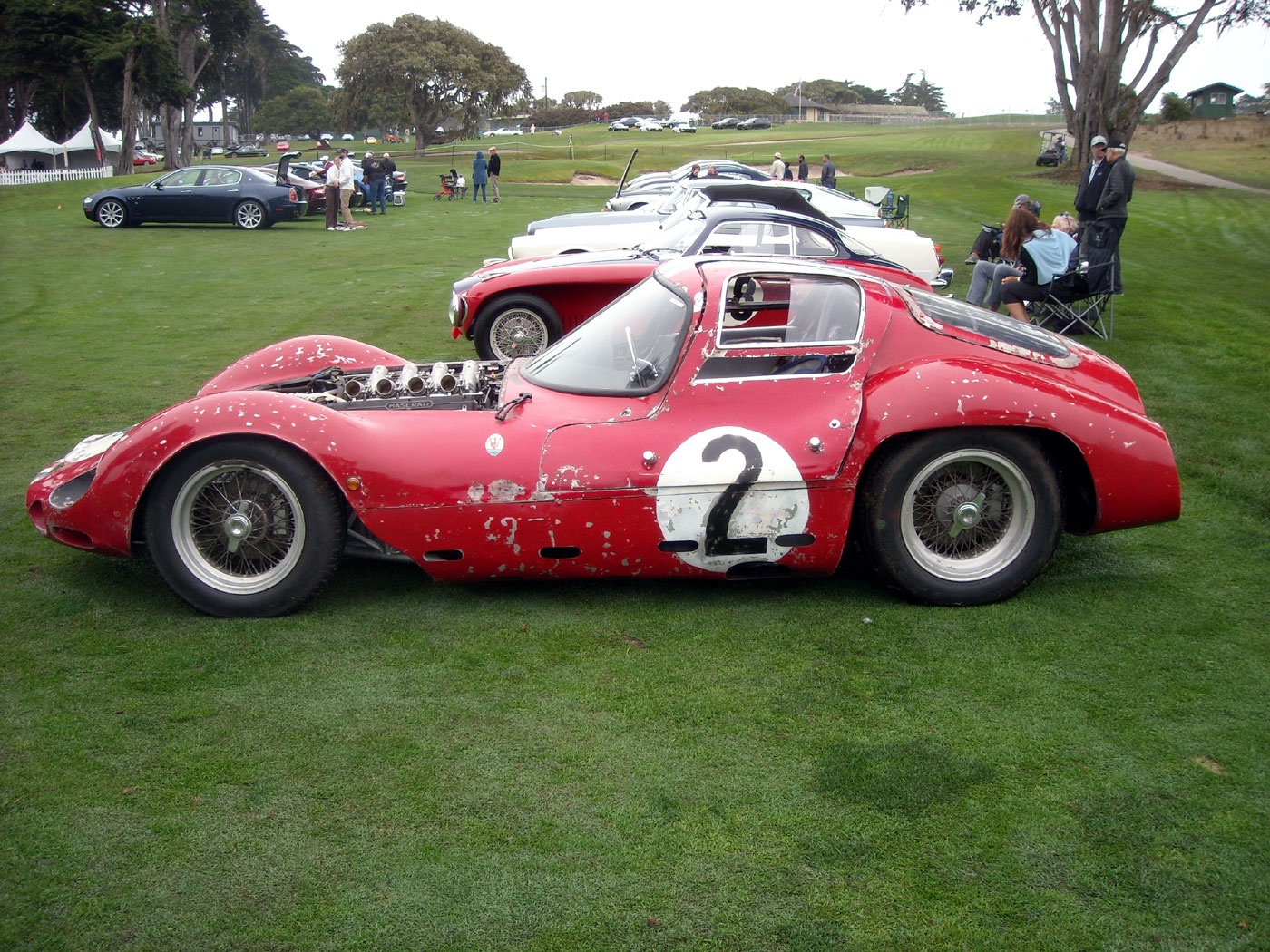
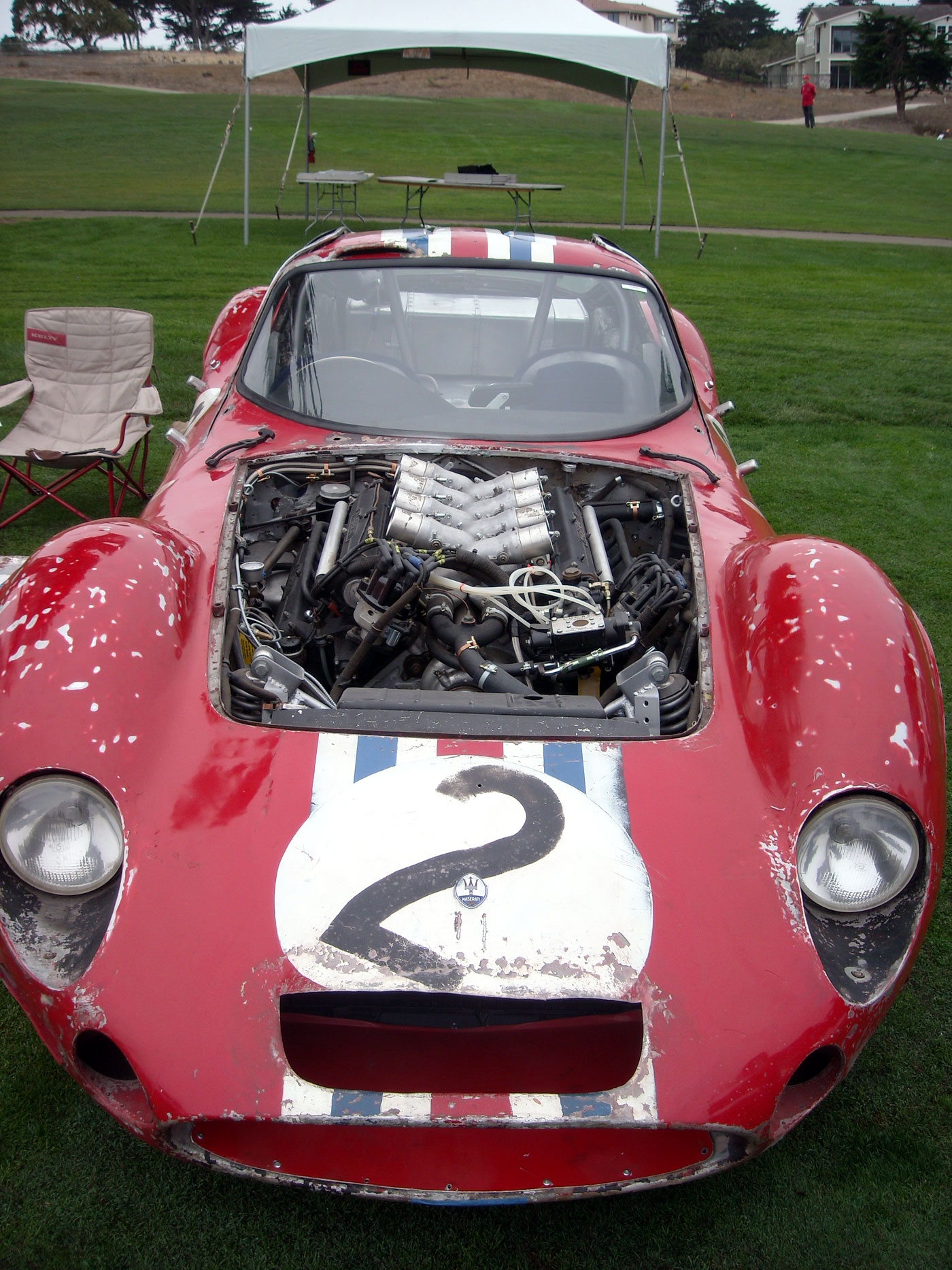
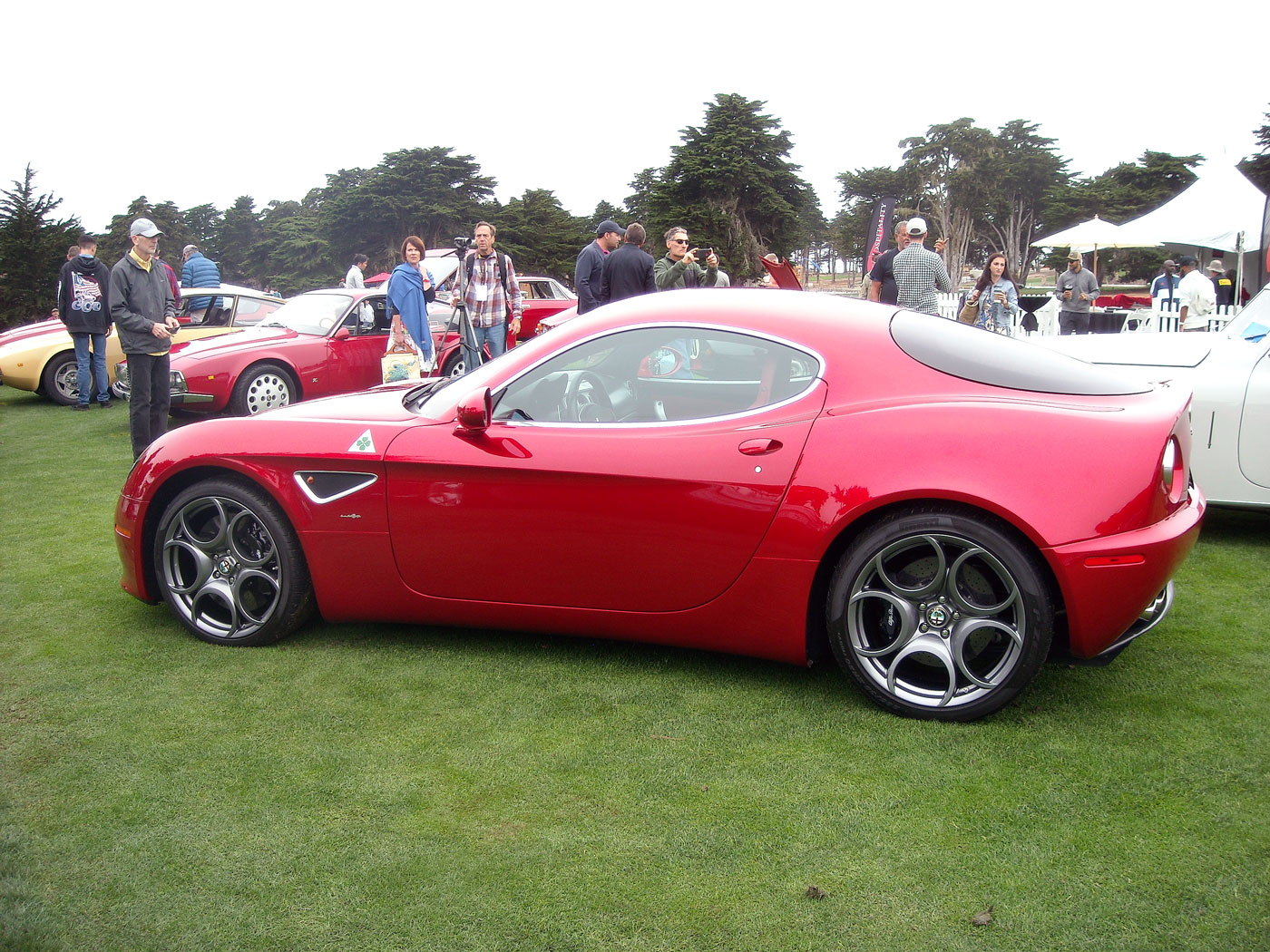
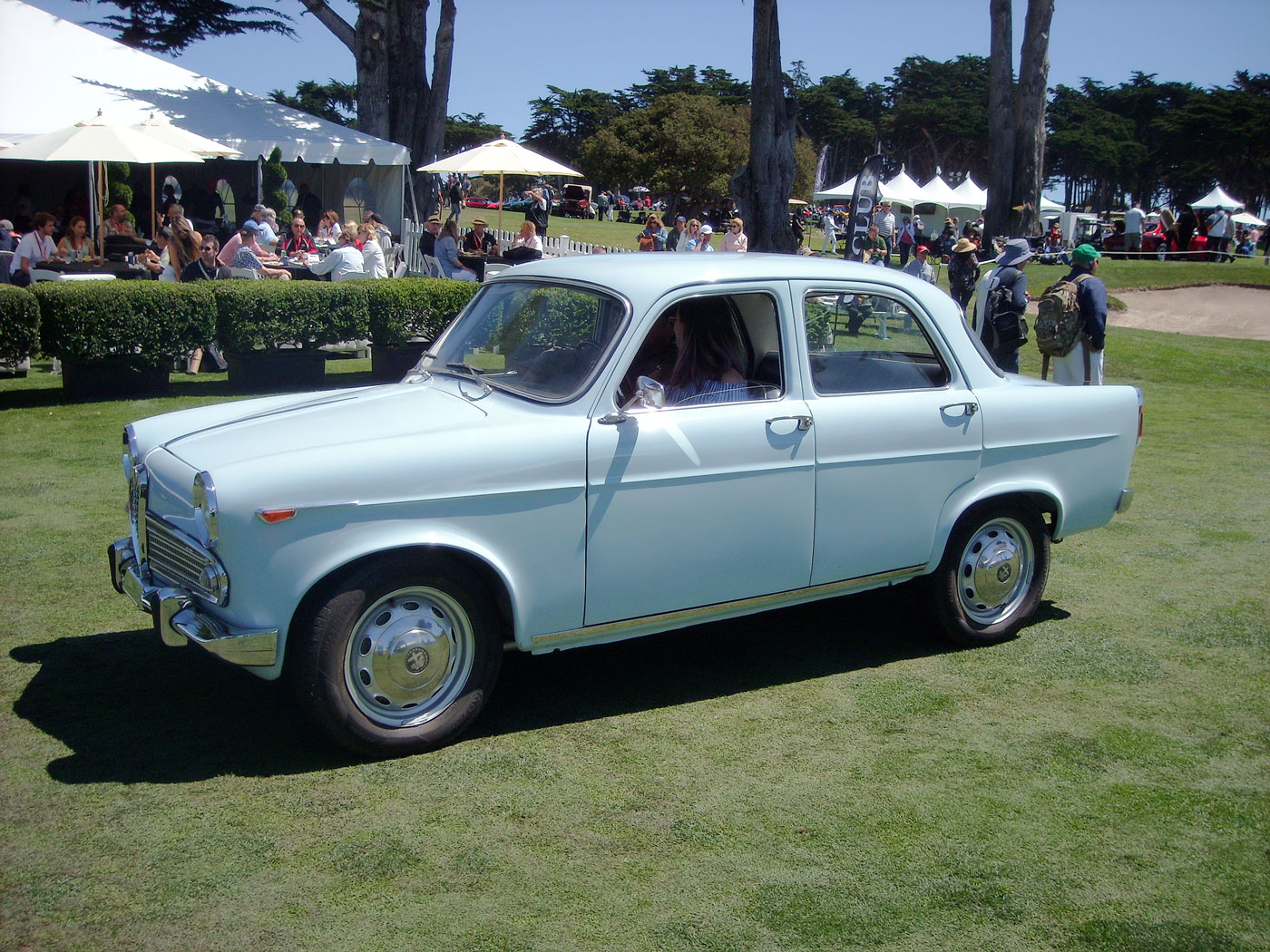
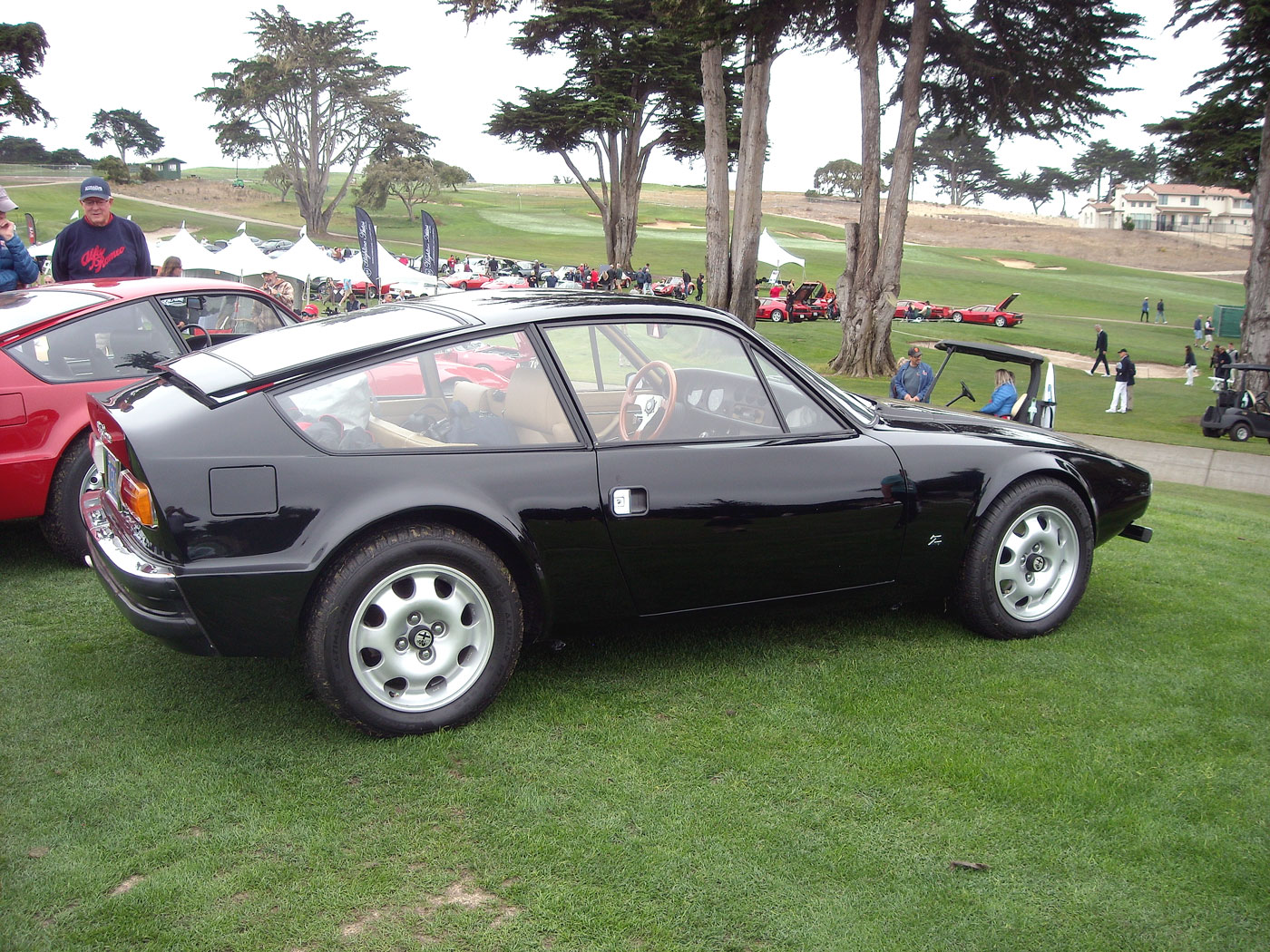
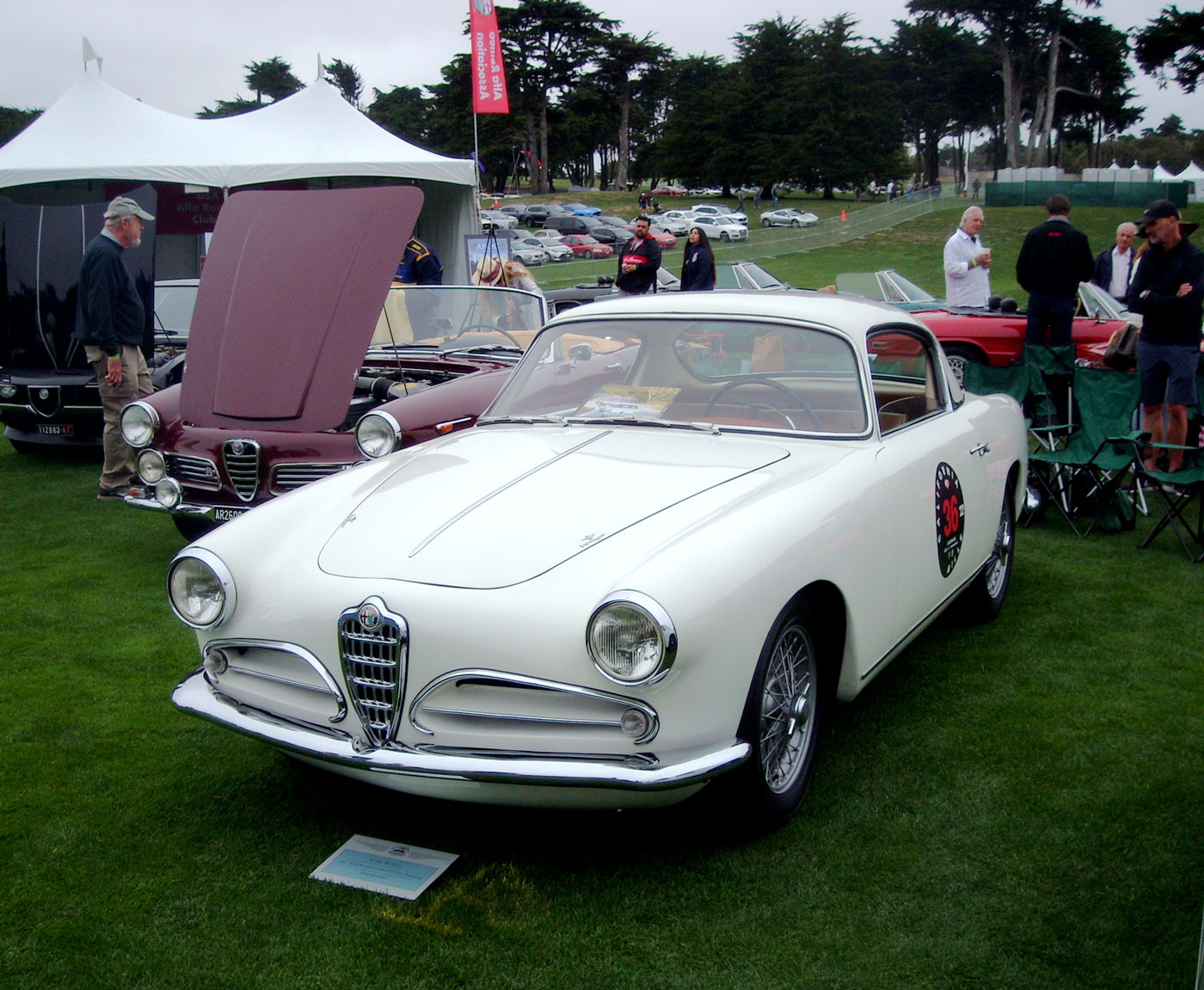
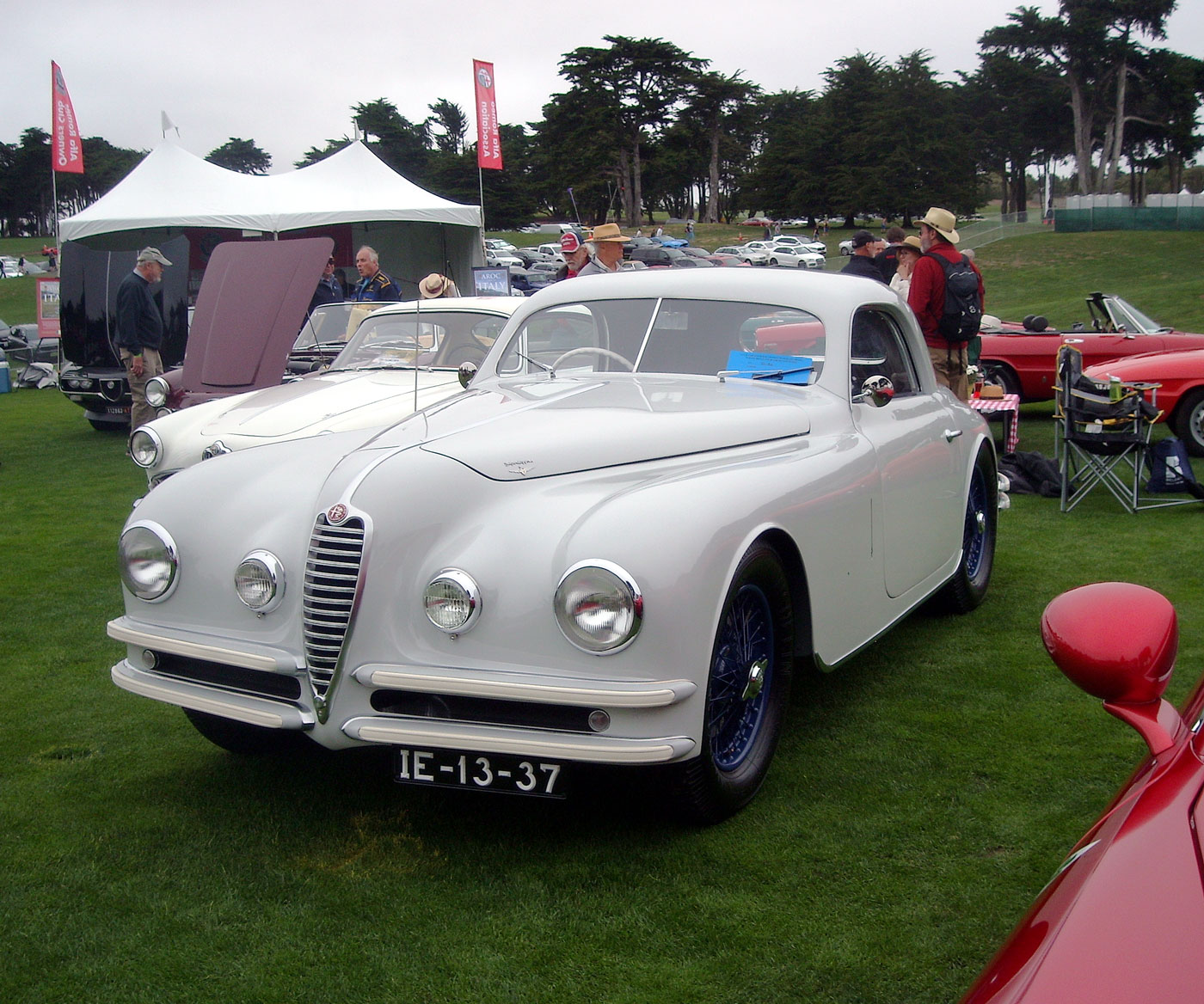
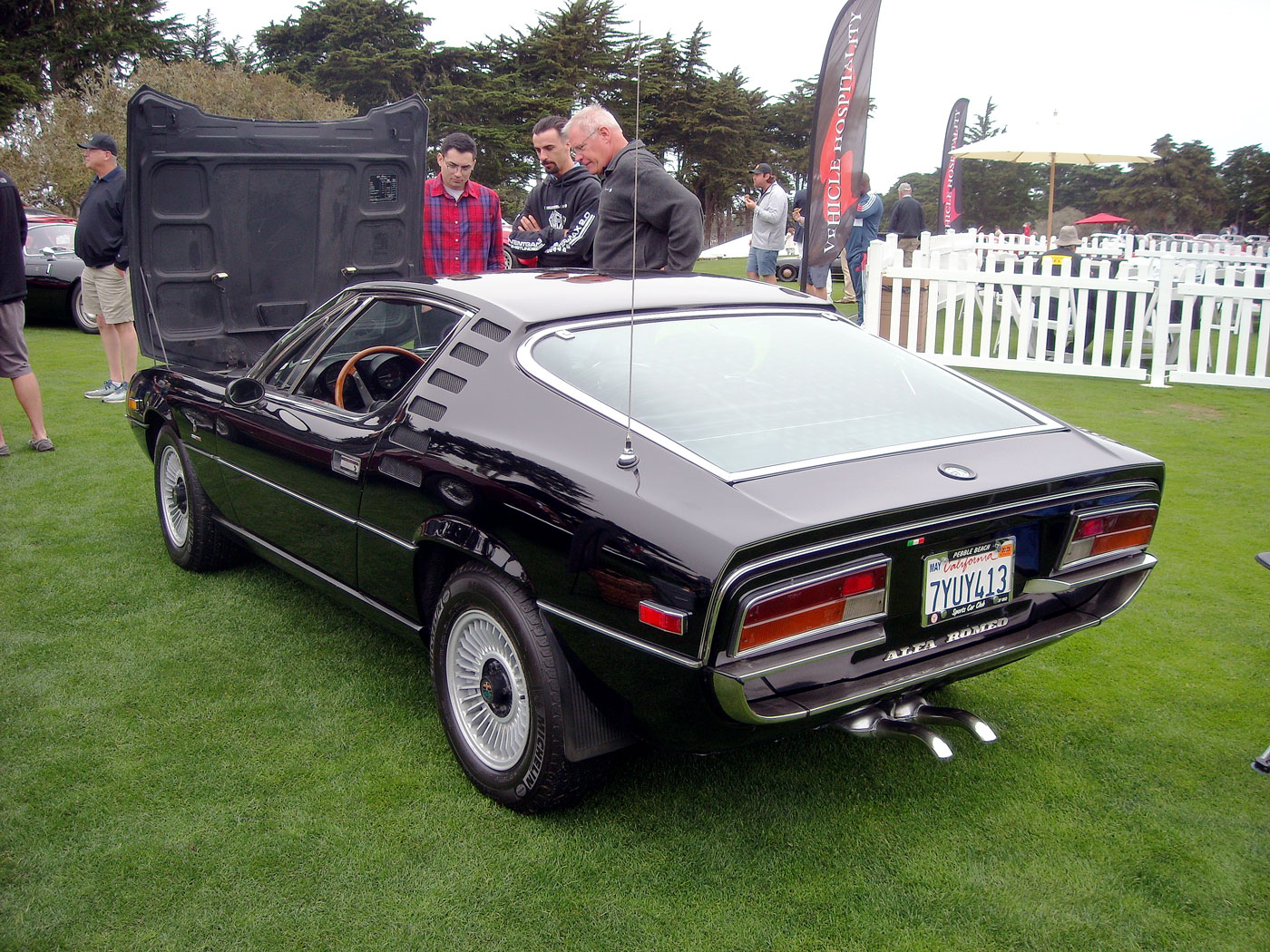
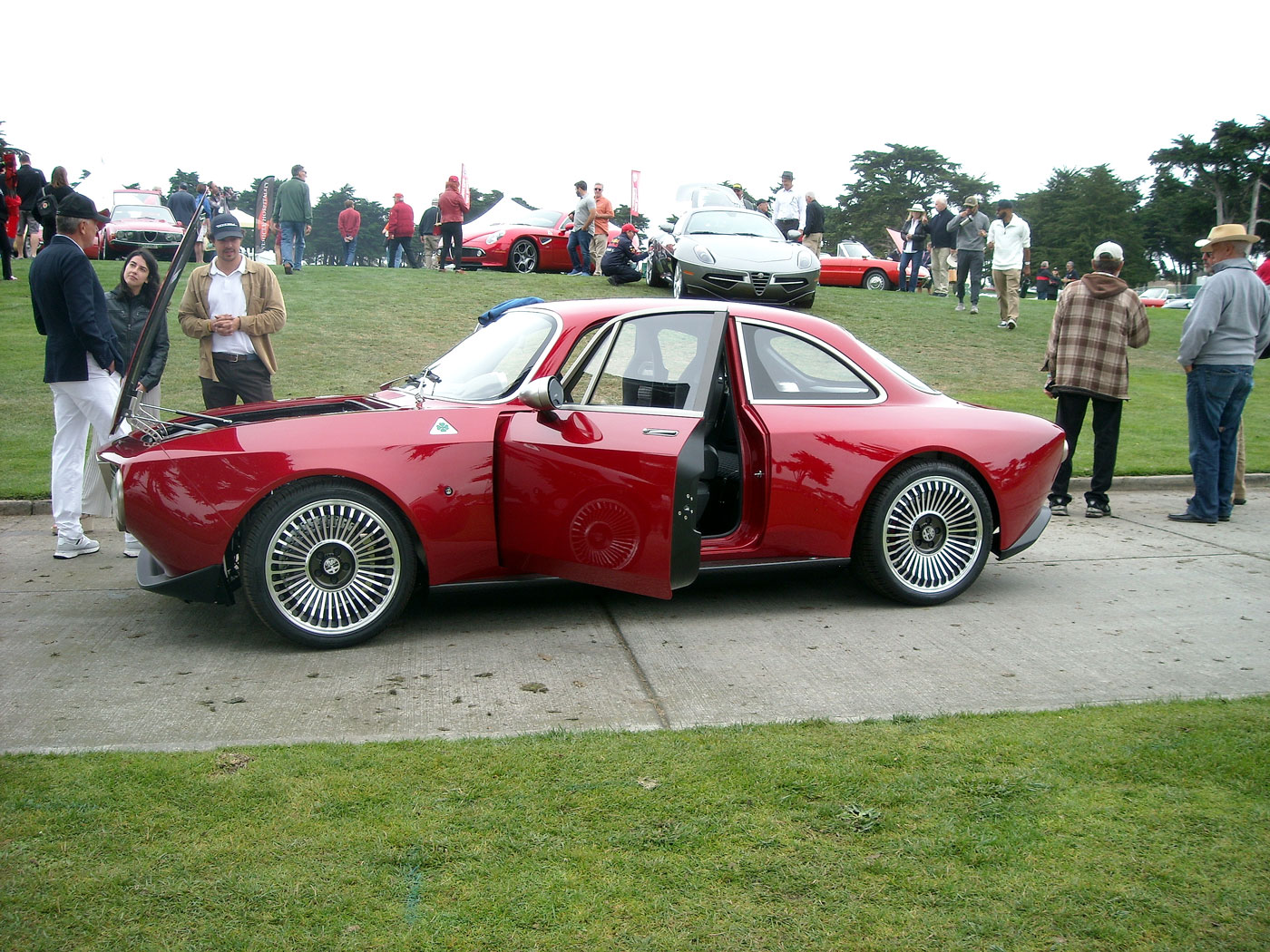
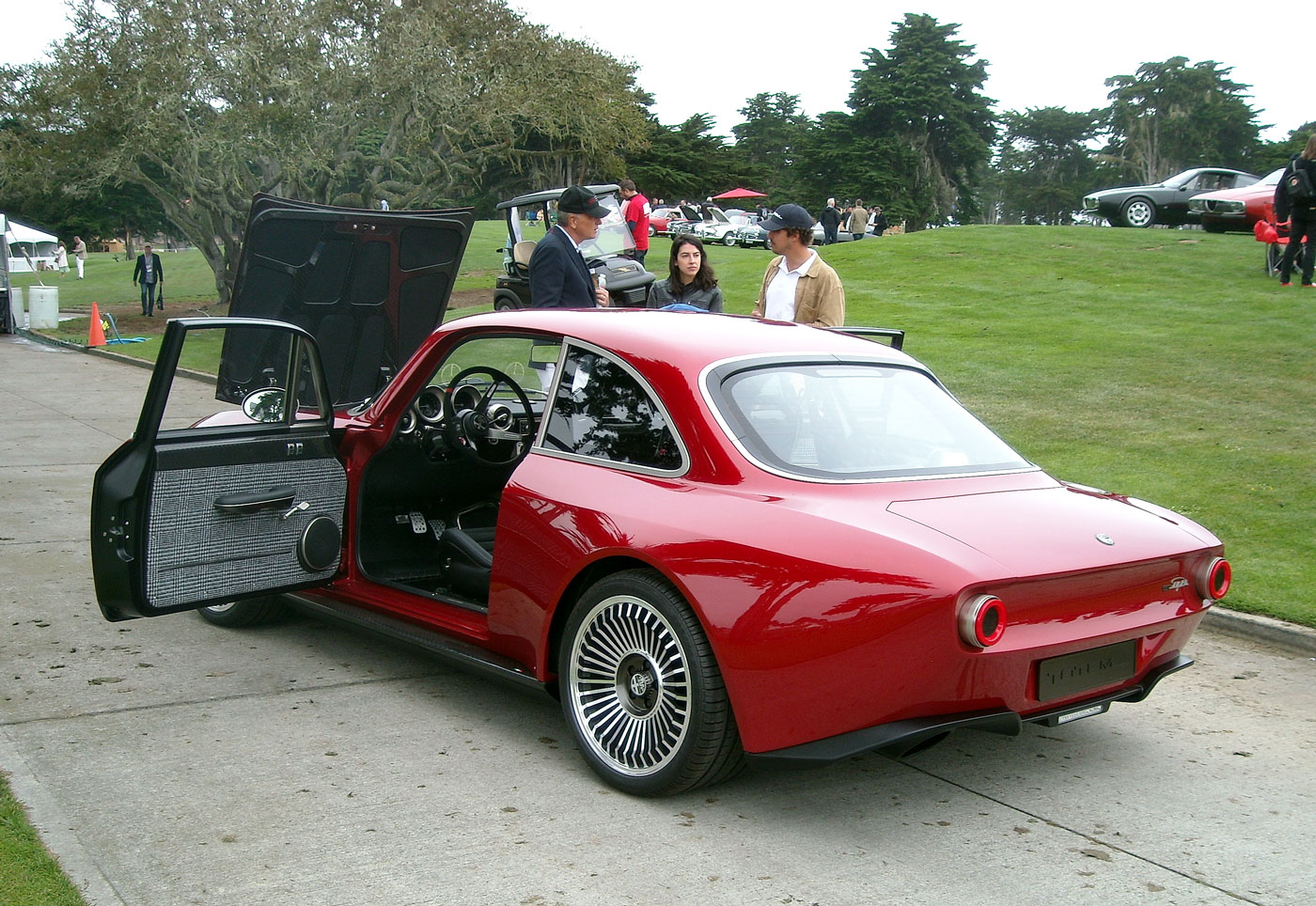
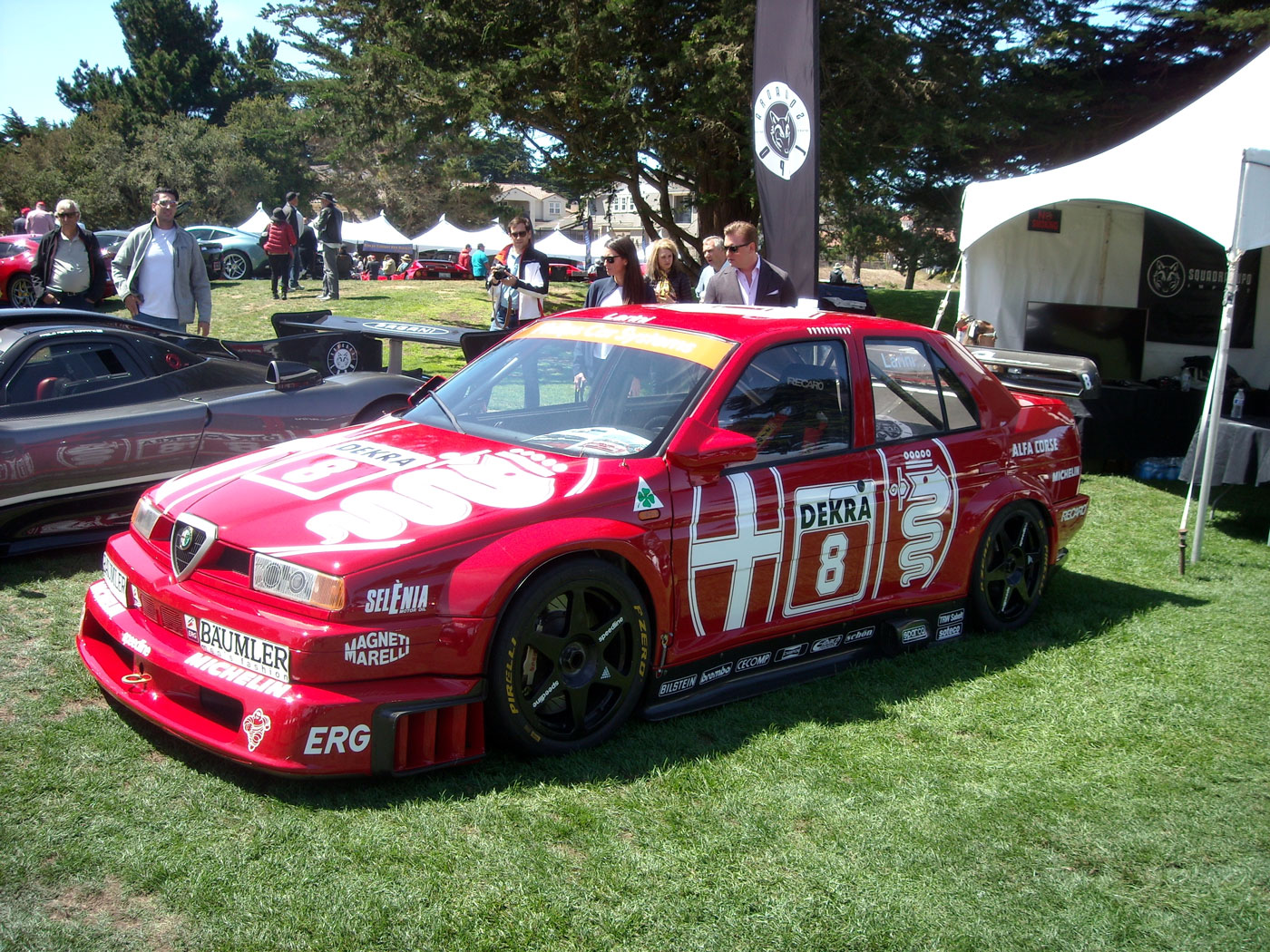
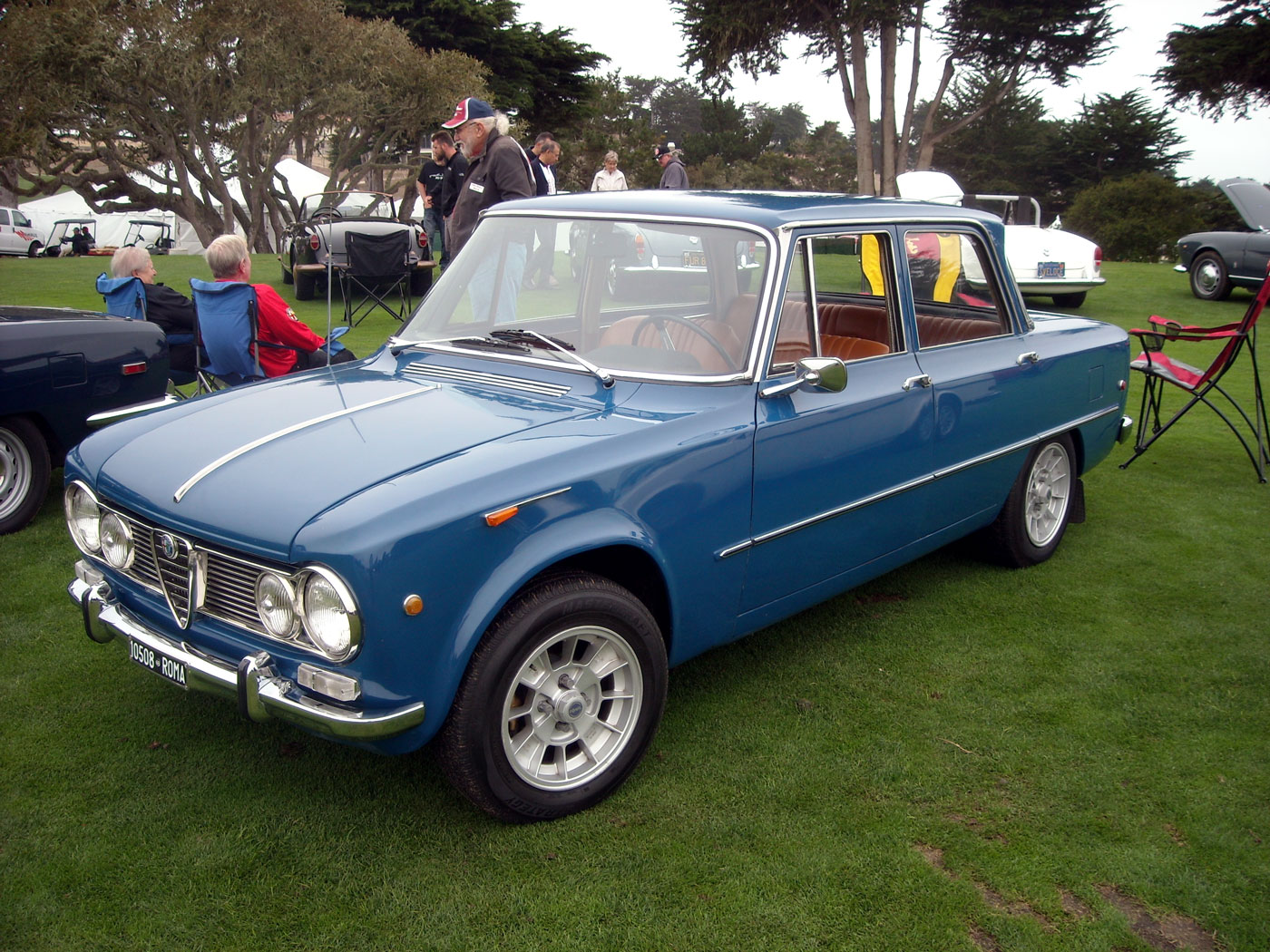
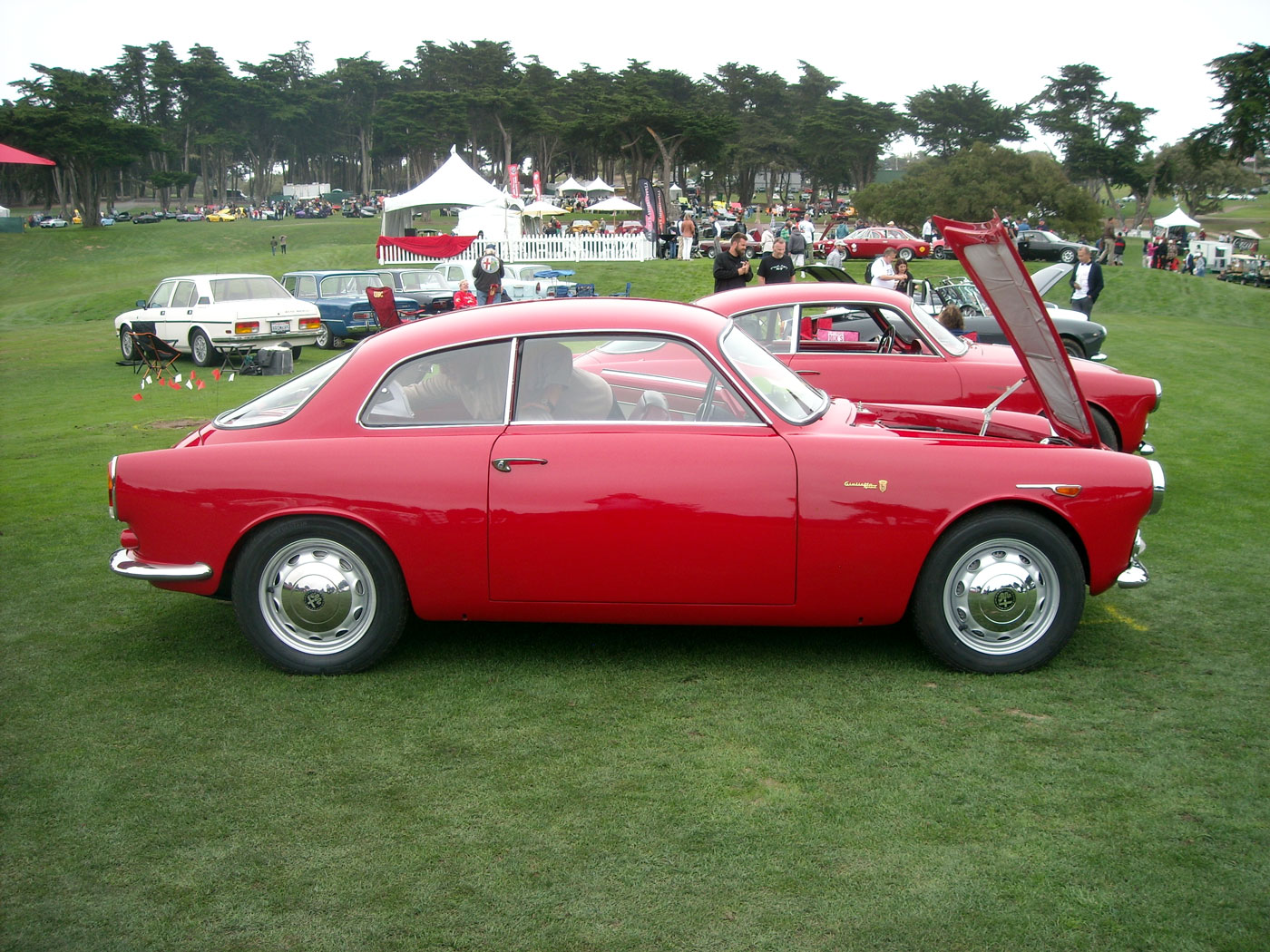
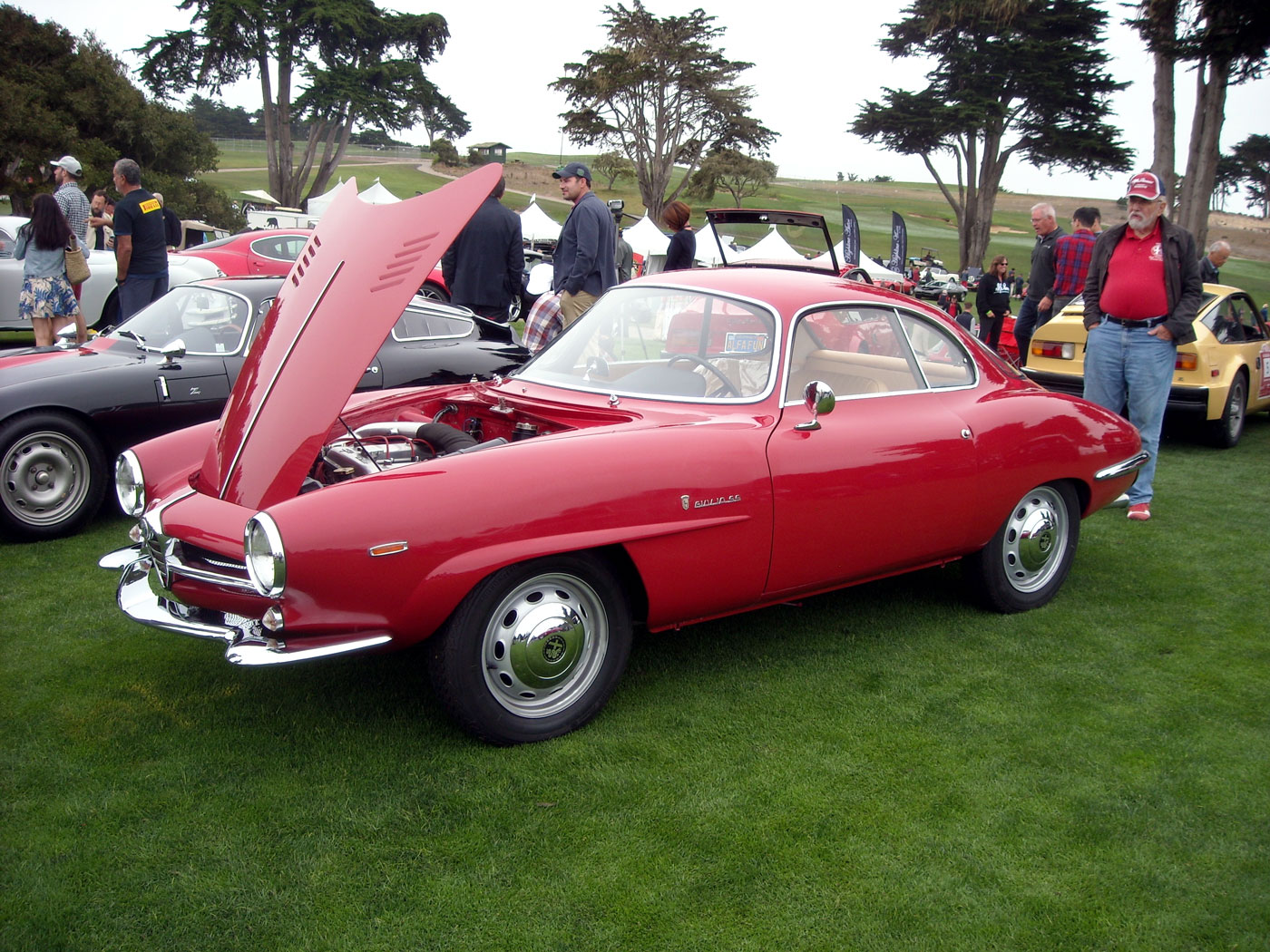
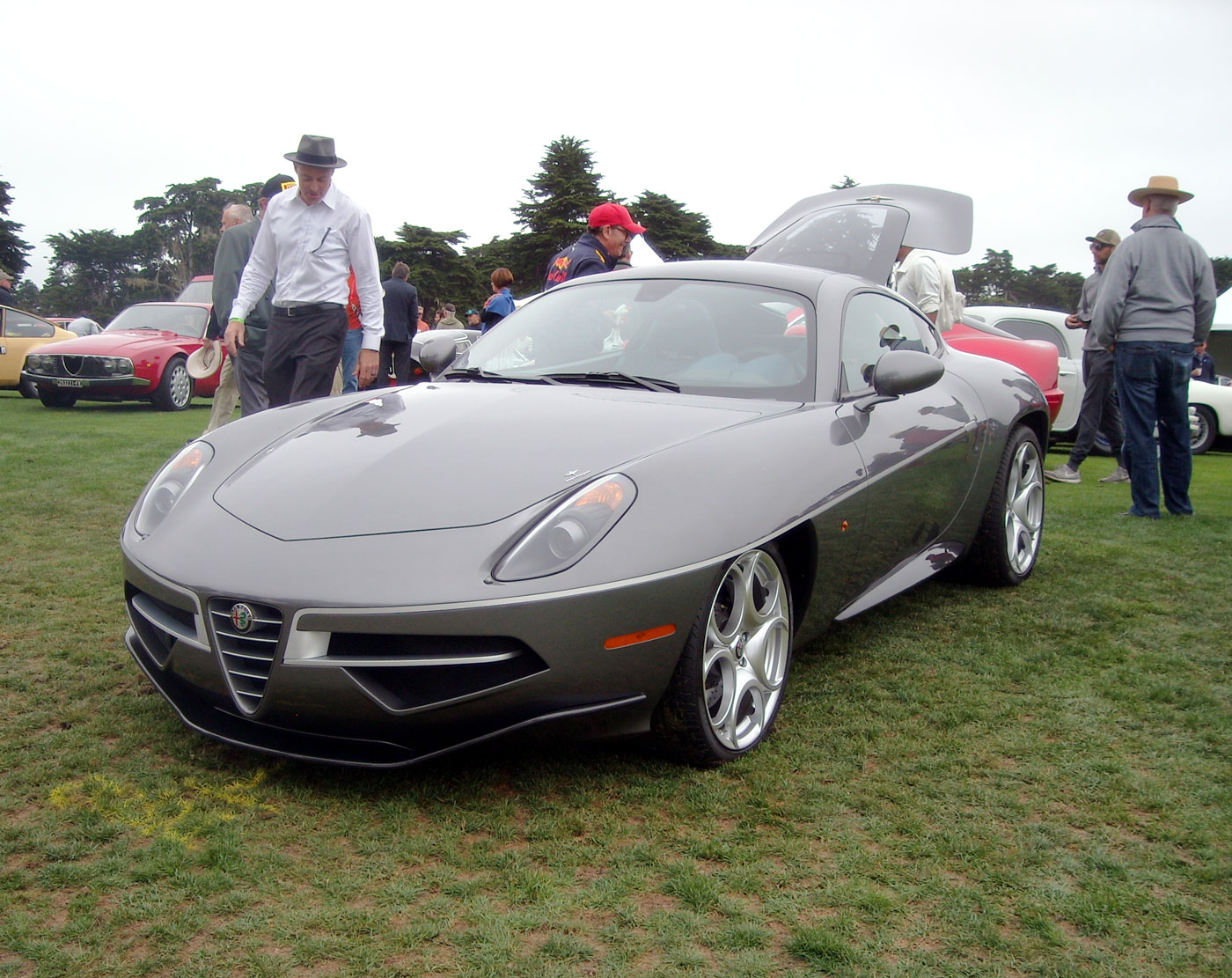
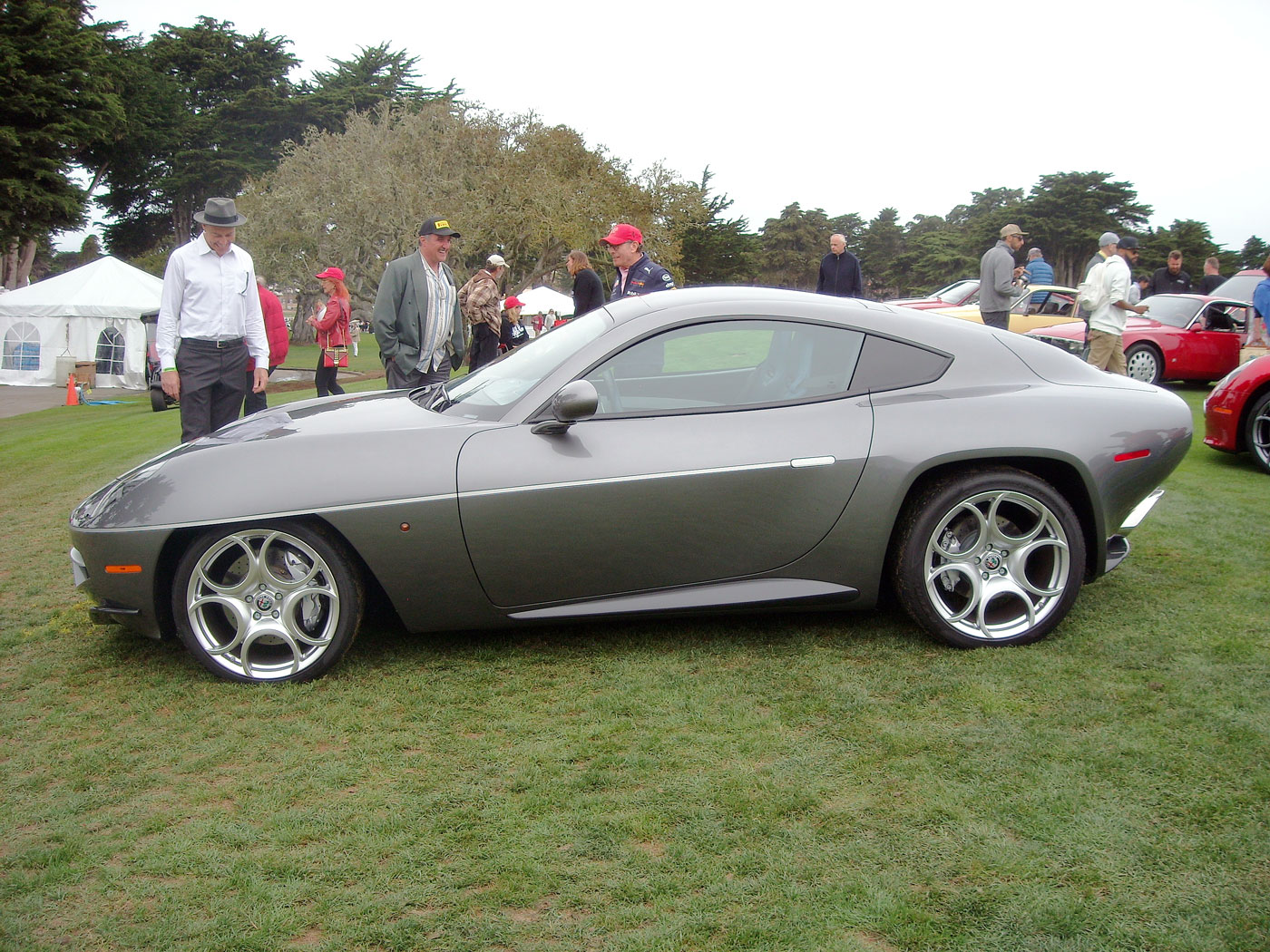
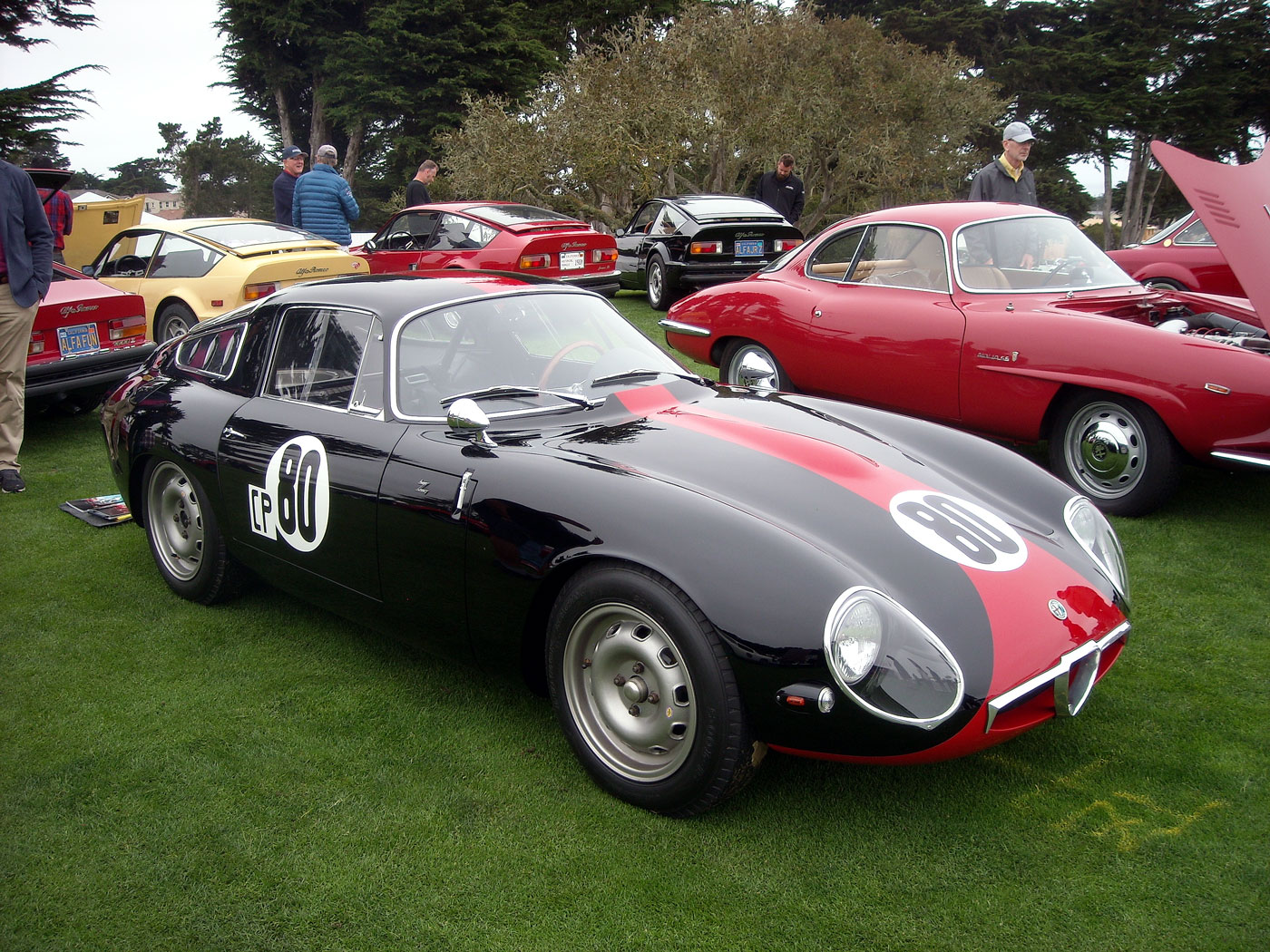
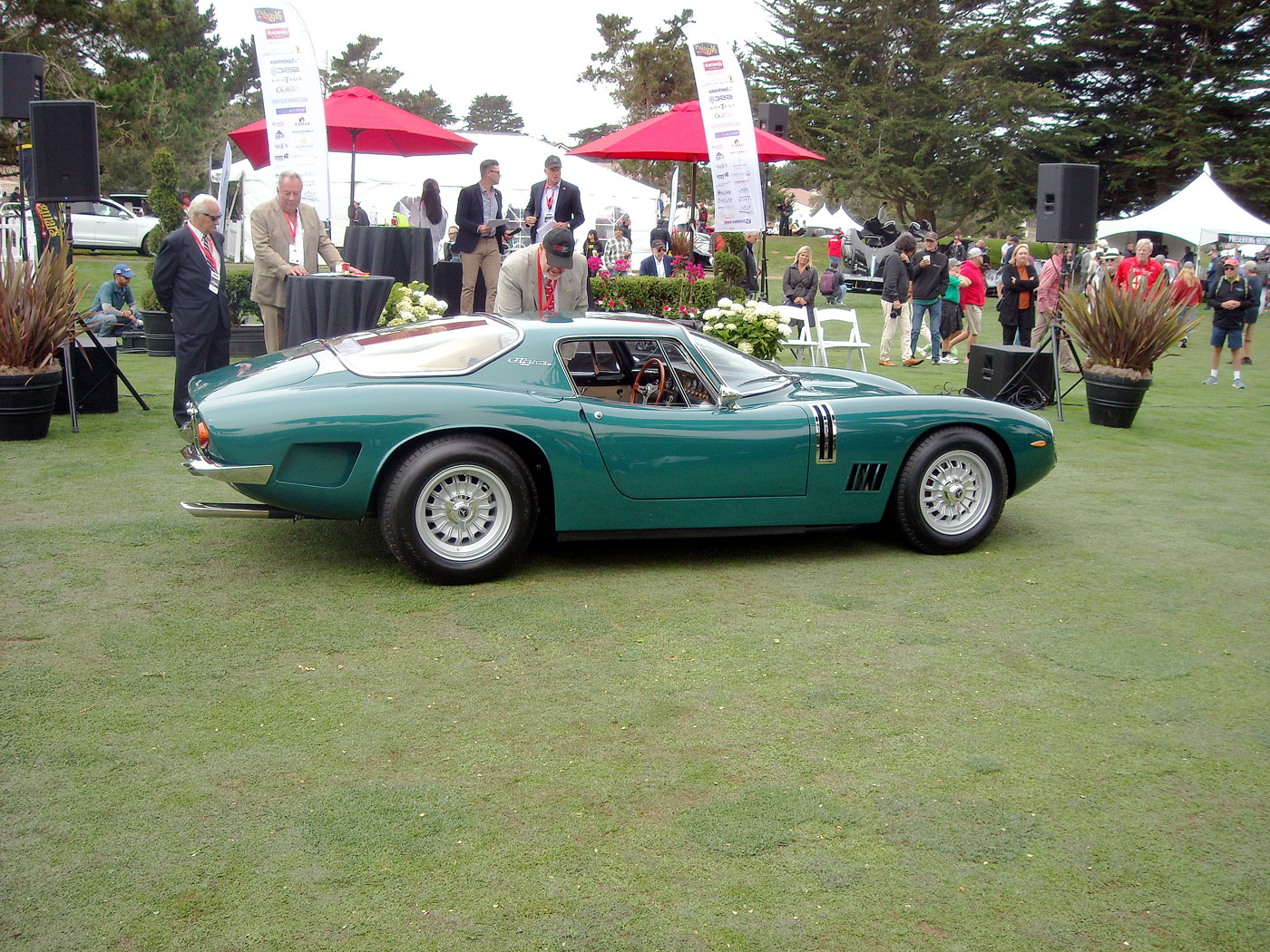
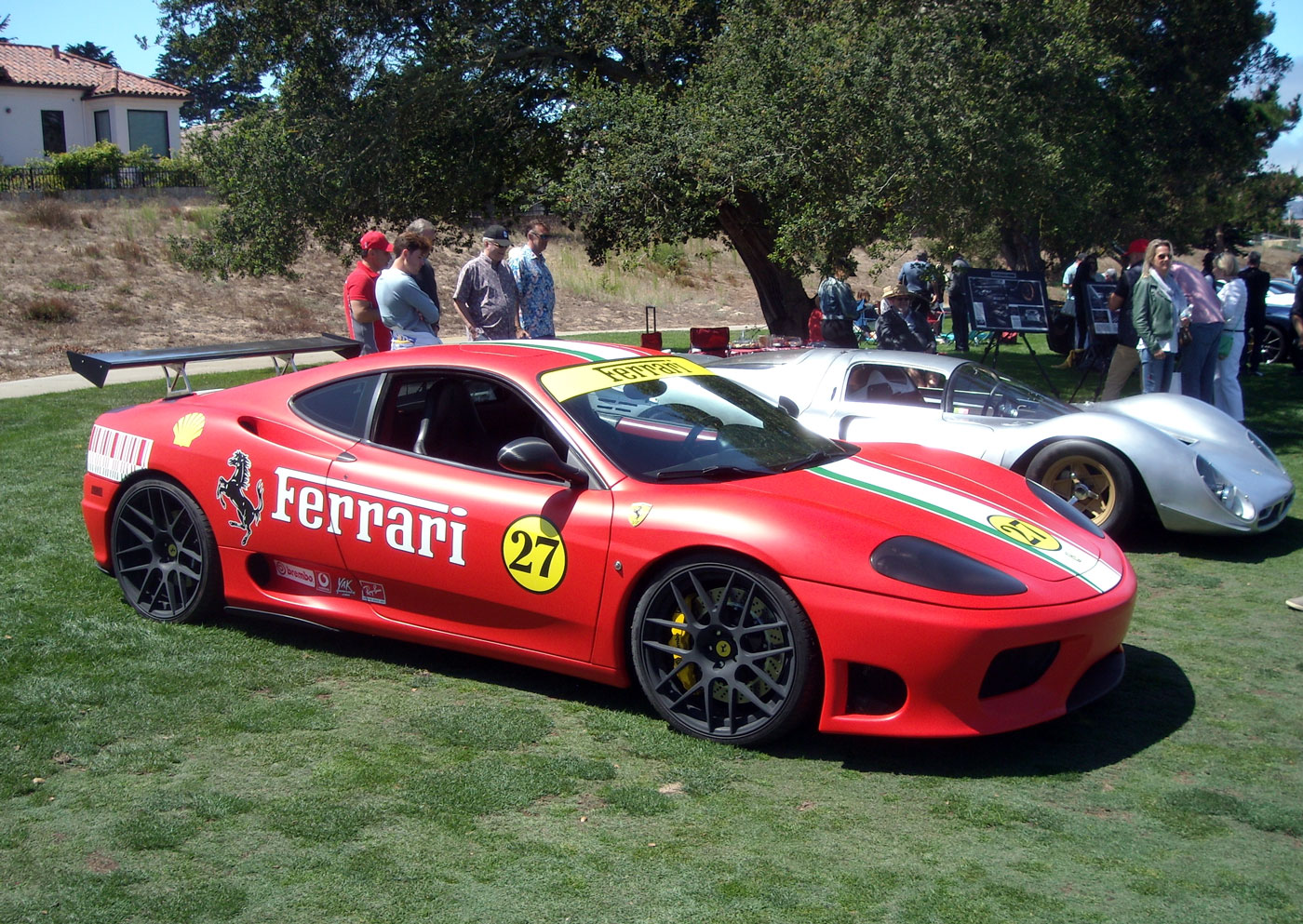
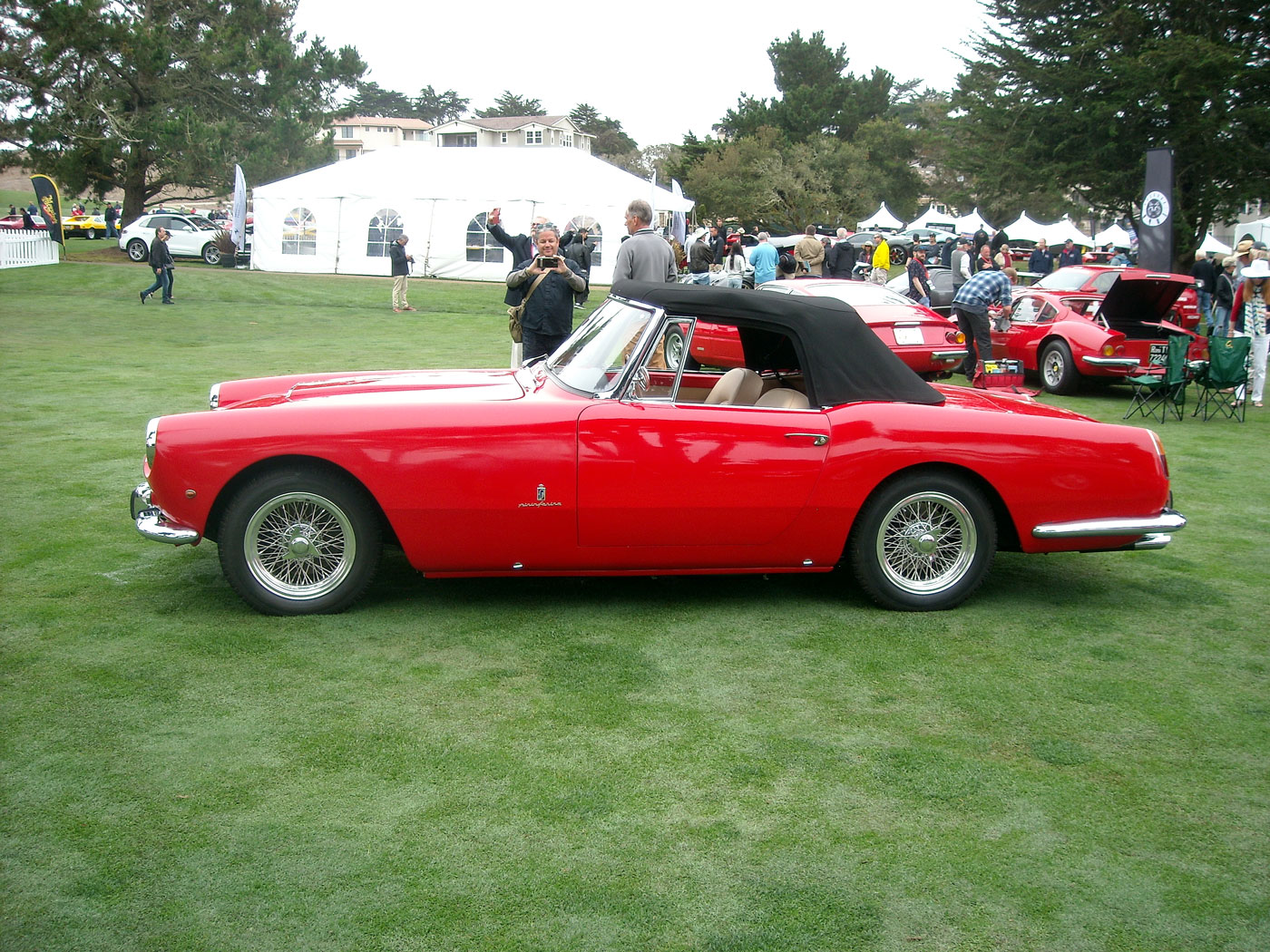
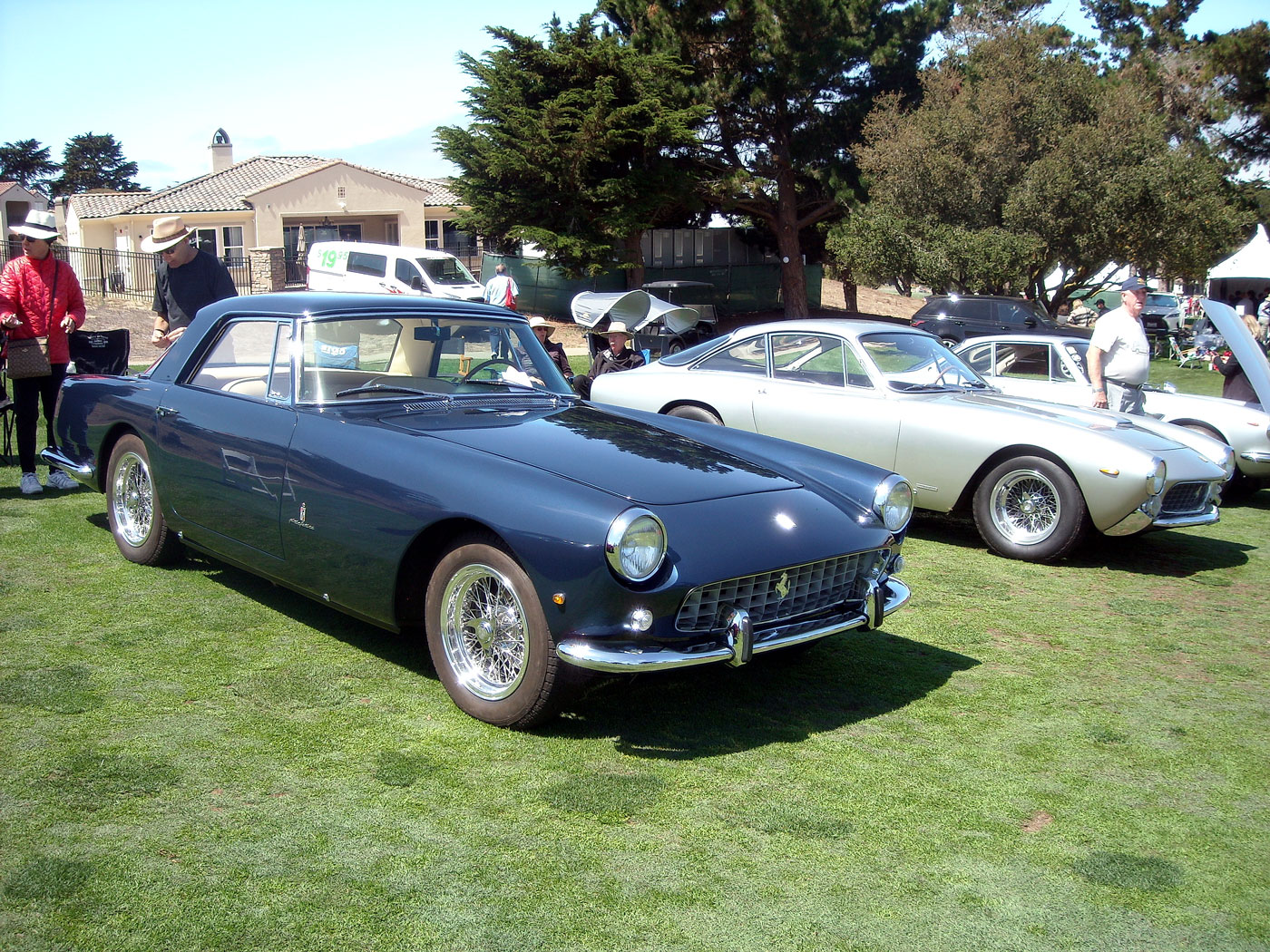
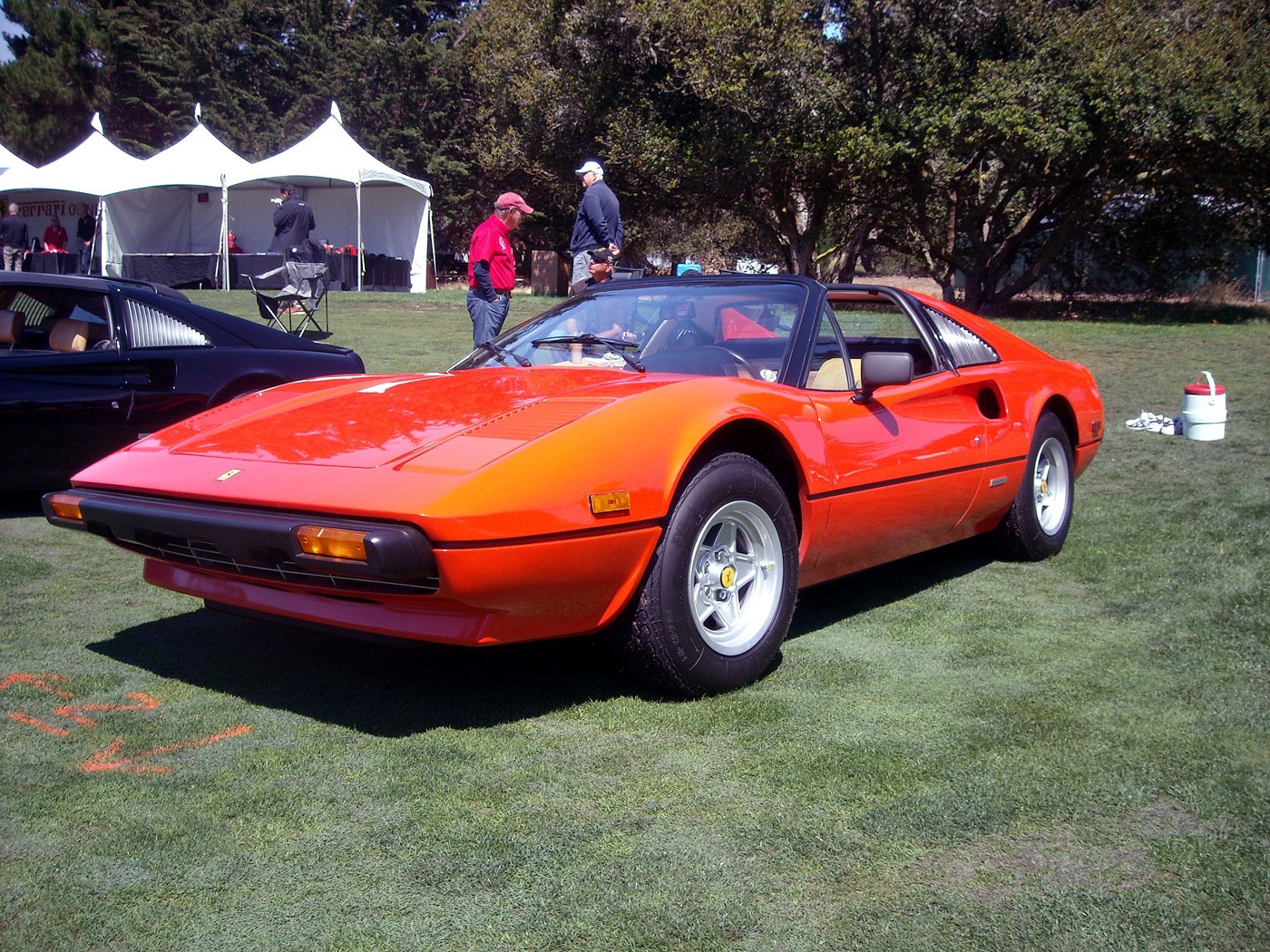
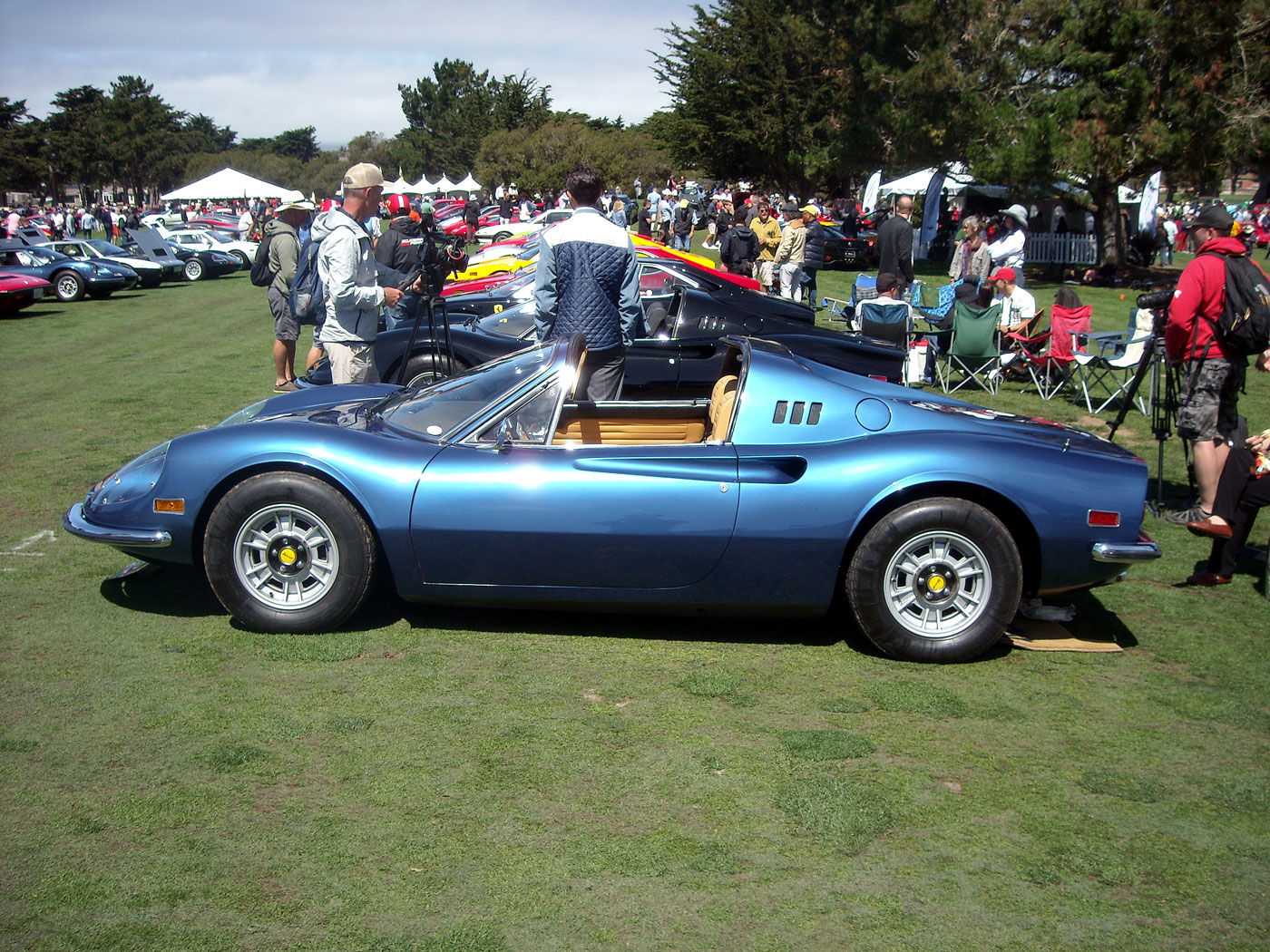
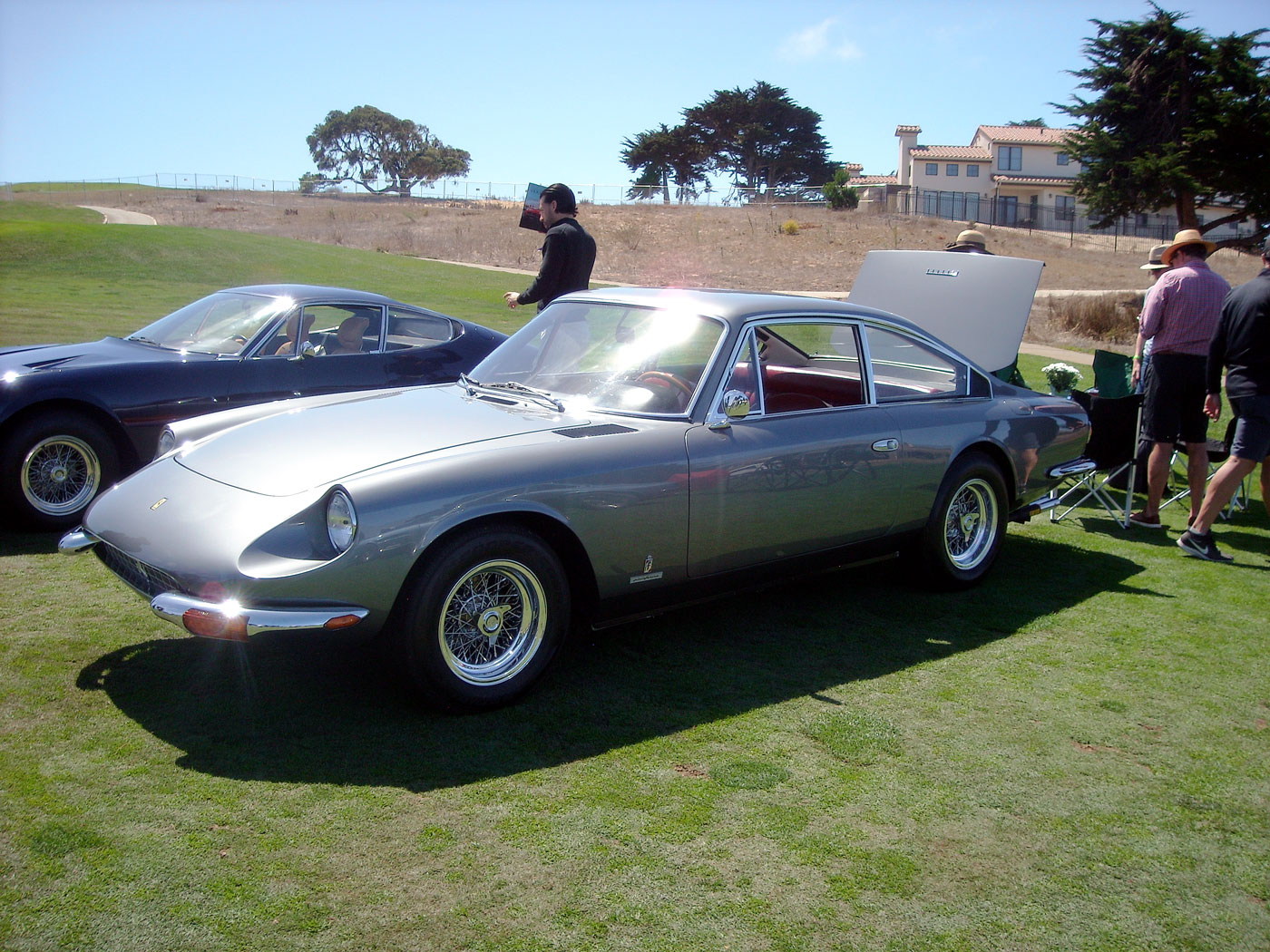
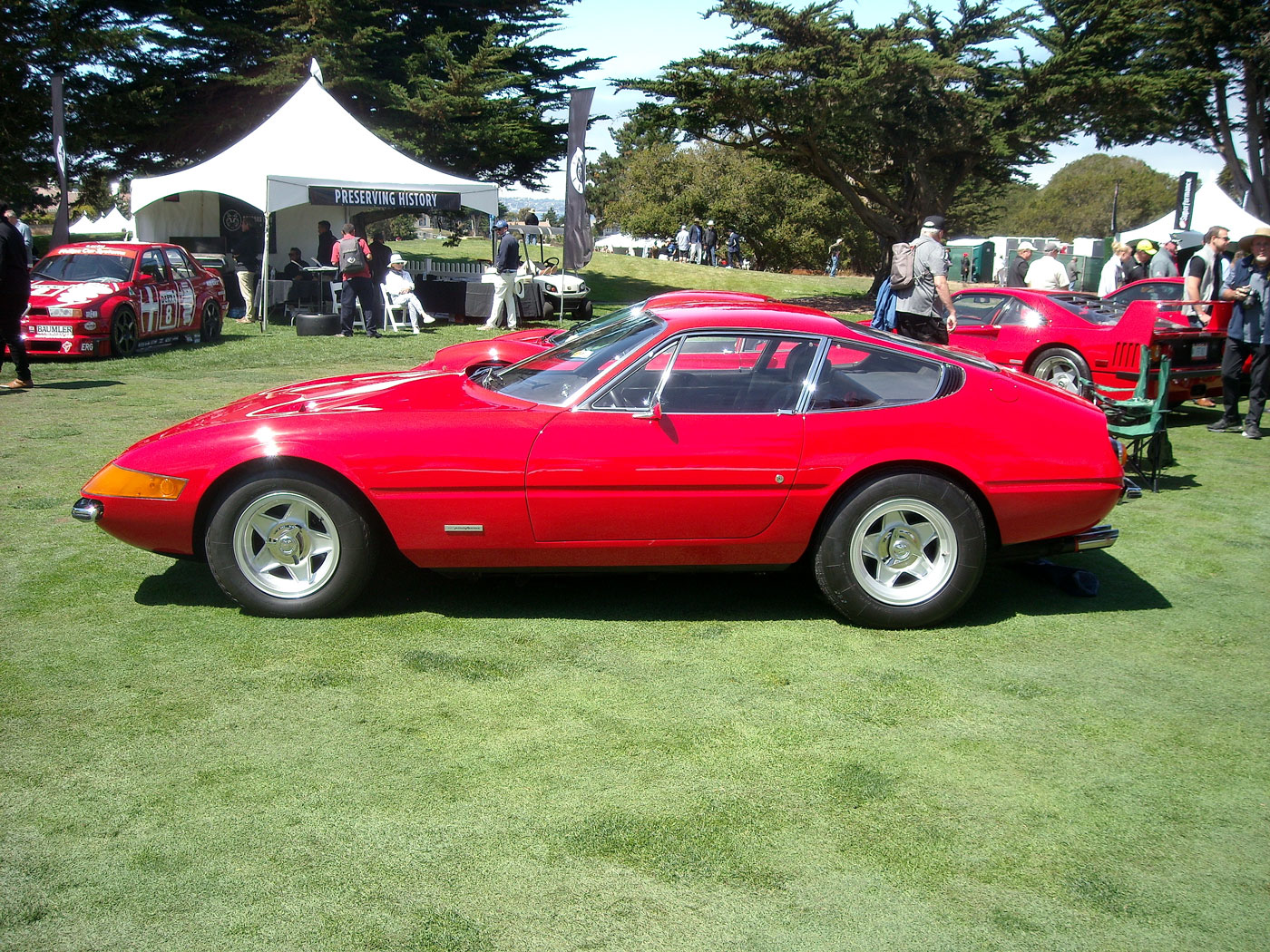
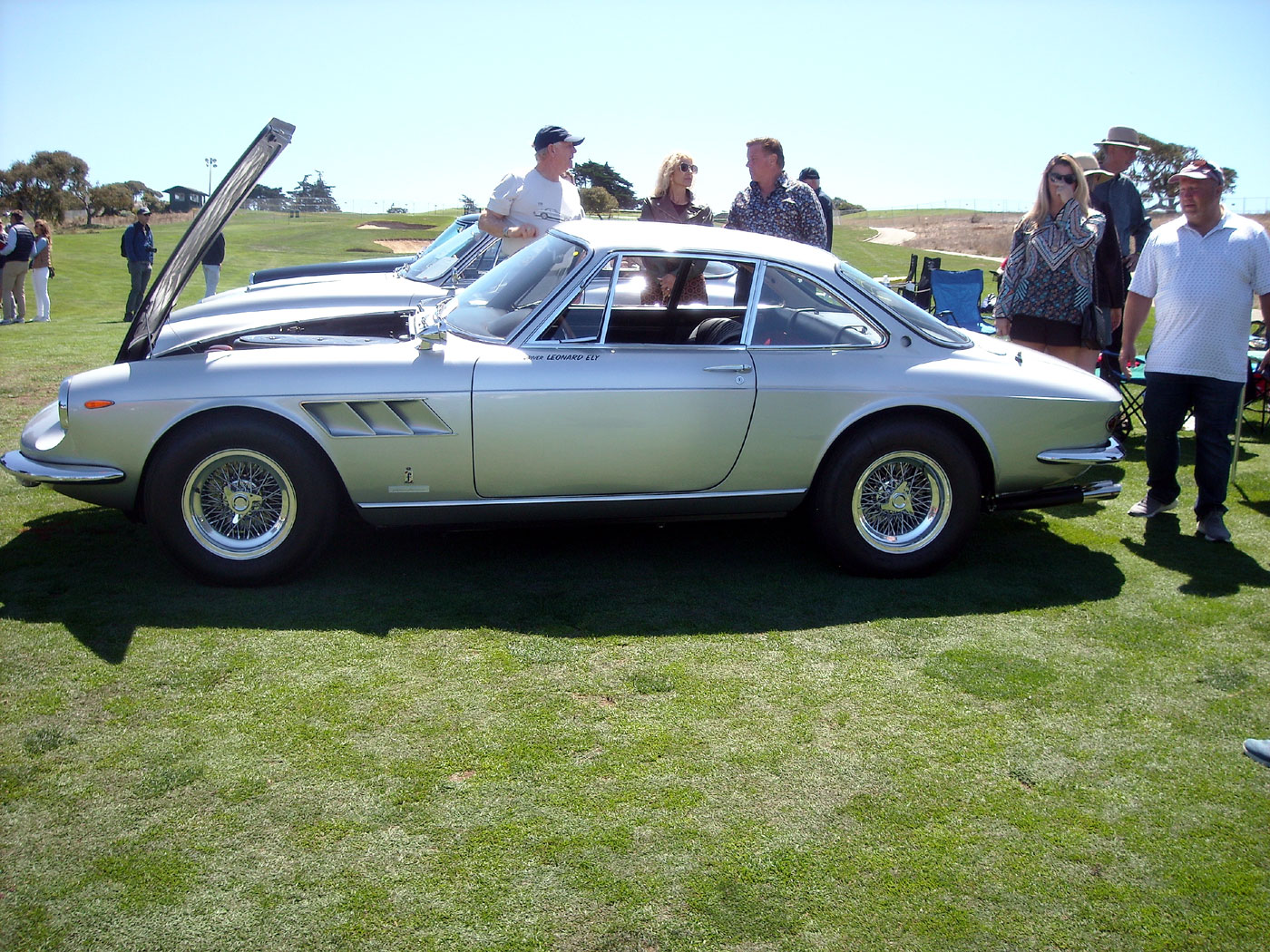
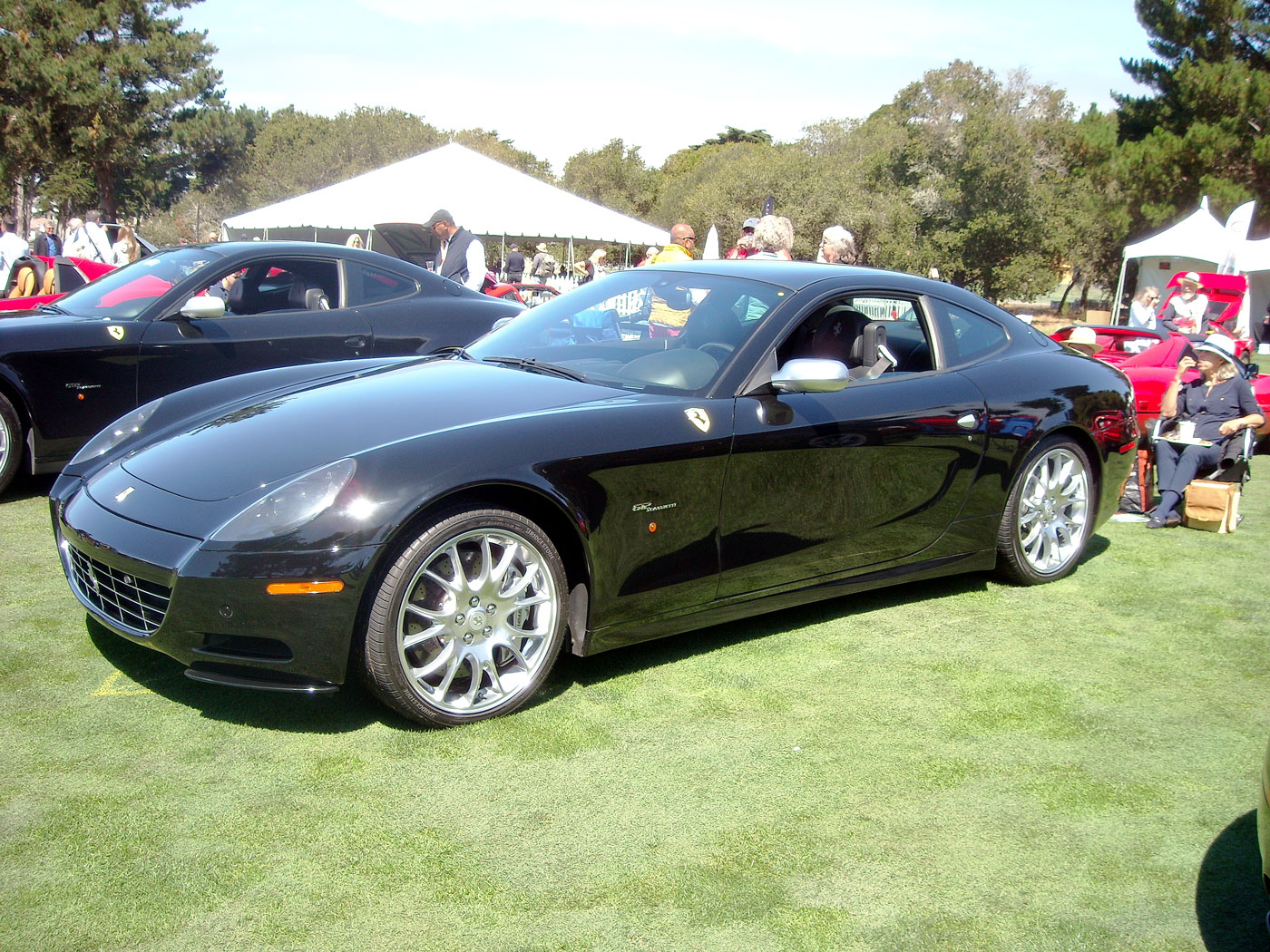
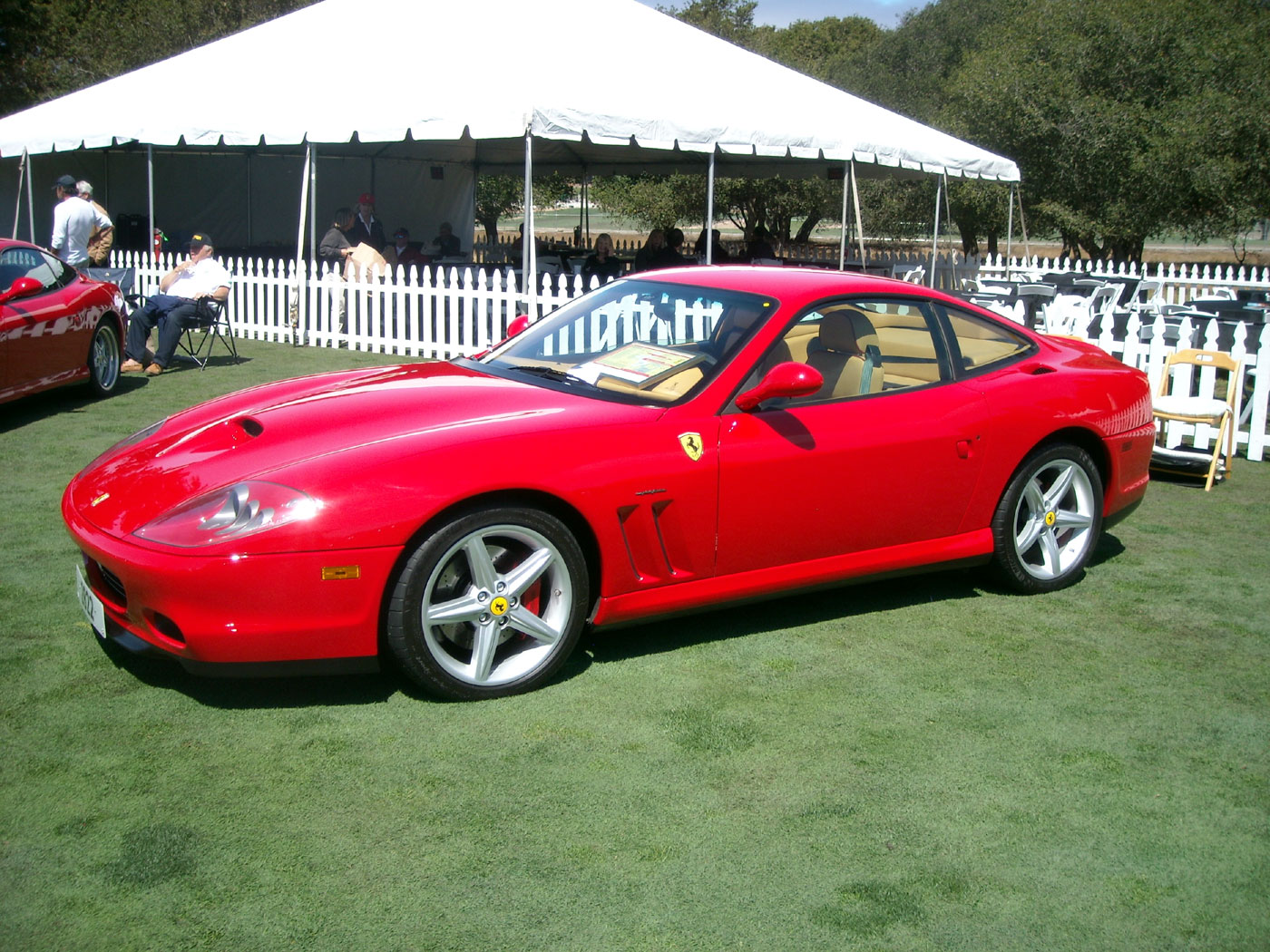
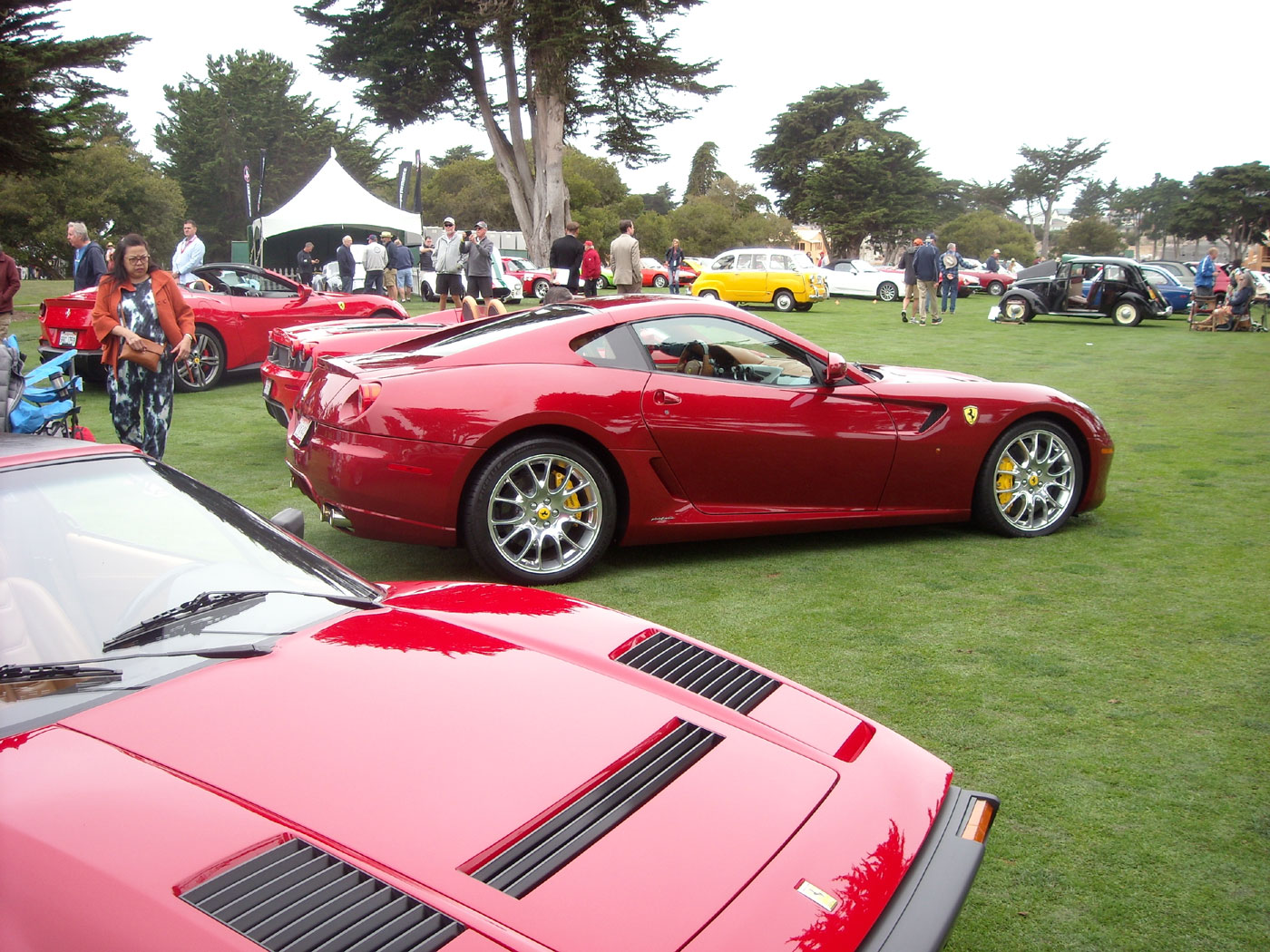
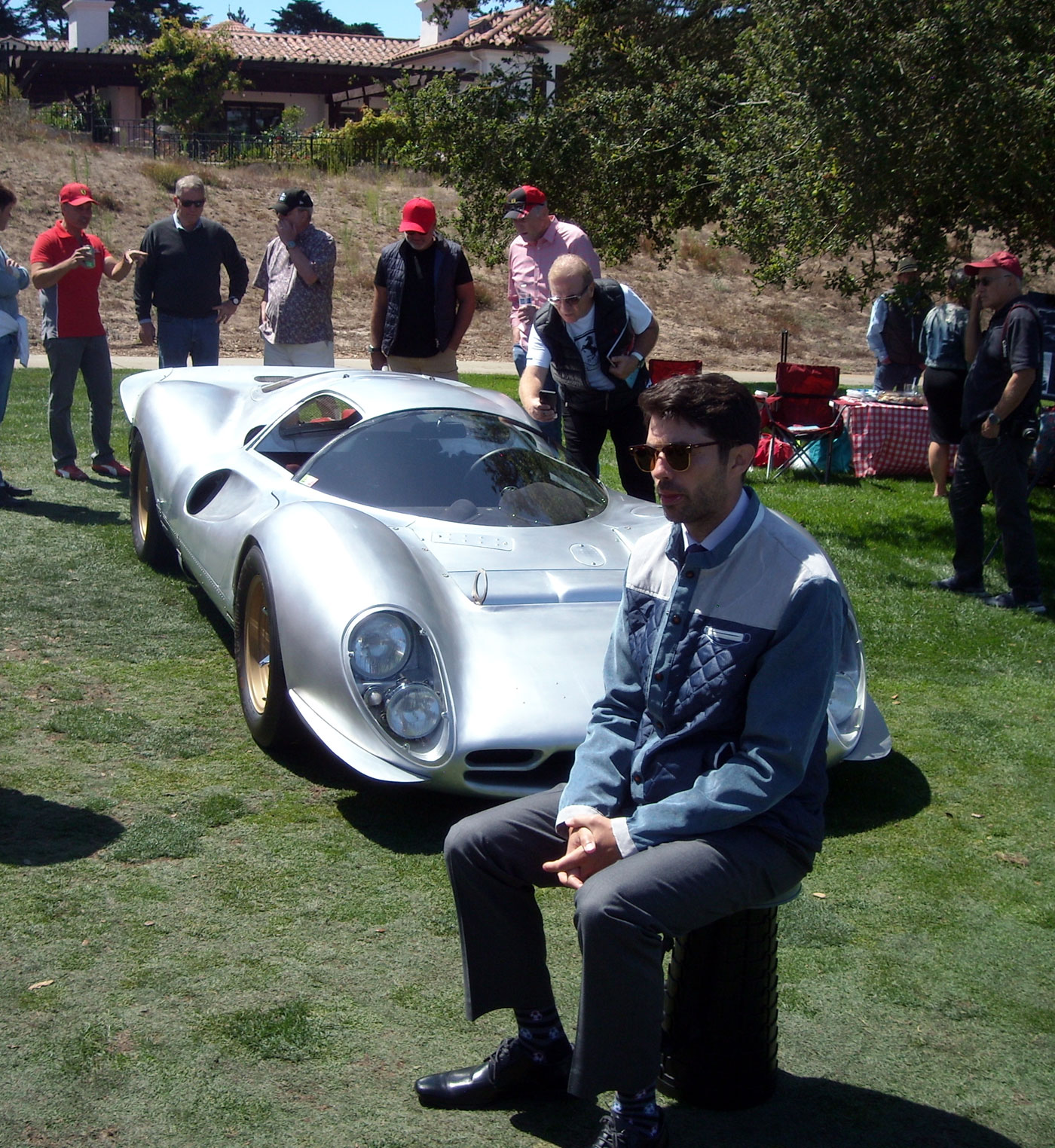
The Black Alfa Romeo labeled as 1600 Zagato is actually a Junior Zagato originally a 1300 now upgraded to a 1750 owned by Tom and Laurie Sahines of Milpitas CA.
I was at all the events you mentioned this year and your descriptions were right on target! Concorso is definitely a more relaxed affair, yet there were still some fantastic cars there. Highly recommended. Great write up and photos, thanks for the memories.
The Megola motorcycle mentioned in the text was the work of wildly creative Munich-based engineer Fritz Gockerell, about whom Michael Schick has written an informative book. Michael has also chronicled the history of the Steiger marque, for which Gockerell was chief engineer. Schick can be reached at mail@micha-schick.de.
Alfa Romeo DTM car is correct identity. Pretty successful car.
I see the familiar and returning faces of California’s Alfa Romeo’s Owners Club, namely Norm Silverman and friends. I always enjoyed going there with the club. What a bunch of fantastic folks with great cars.
I’m also very intrigued by the Totem’s Giulia GT Electric. Now there is something I could use as a daily driver.
fabulous article, Brandes, with lots of back-story detail!
In your photo “Readers, your turn.” the foreground car is a 237,000 mile 1984 Ferrari 308 GTS QV, next to it a 599 with an absolutely astounding list of options, next to that an F430 spider and lastly I think a Portofino.
Now, if Maserati had only managed to produce a GT version of its Tipo 151 model rather than just three prototypes, all those Ferrari GTOs would have been mincemeat.
Totem is making electric cars as well as ICE-powered cars. The one shown at C.I. is gasoline V6 powered.
The (blu sera) 250GT Pinin Farina coupe shown is one of the last Series II PF coupes cars made.